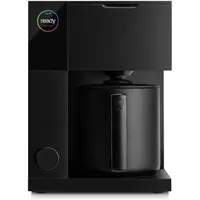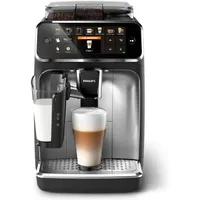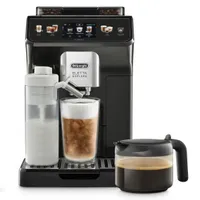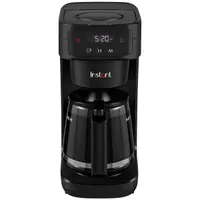The best coffee maker 2025: espresso and filter made easy
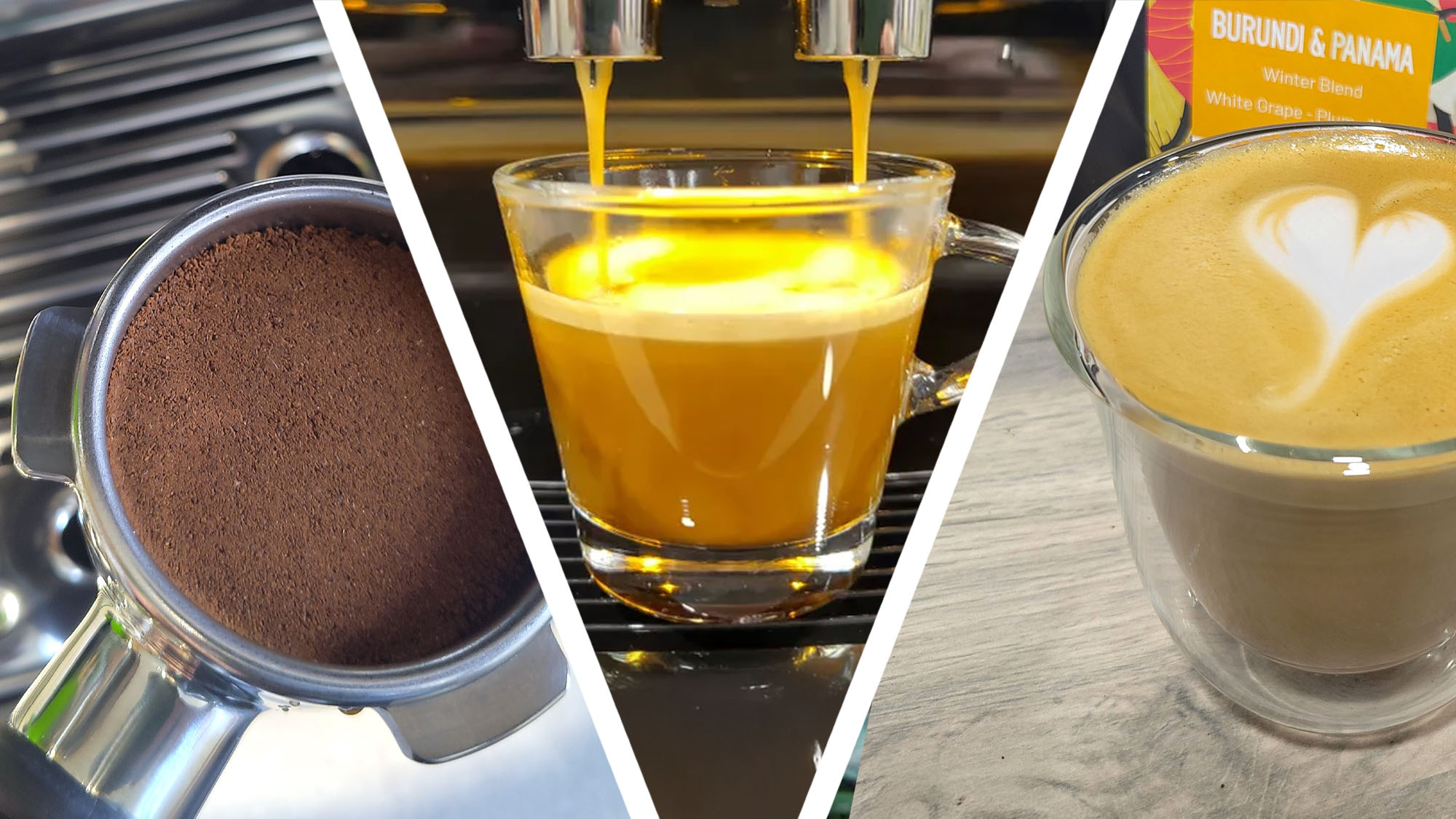
The best coffee maker will make your life better. Or at least, it'll get your day off to the right start.
According to a recent study by Deloitte, over half of the respondants in a global survey "said that rising prices had led them to make more of their own coffee at home in recent years instead of buying it out and about." More of those people opt for instant granules than any other type of coffee, but making a quality brew using fresh beans doesn't have to be difficult or expensive.
All of the best coffee makers you'll find in this guide have been thoroughly tested by us, in real kitchens. We investigate at not only how good the coffee is (we're extremely well caffeinated at this point), but how easy these machines are to use and clean, how noisy they are, and the variety of drinks they can be used for. Whether you're an espresso aficionado or just want some easy extra get-up-and-go, there's a recommendation for you here.
The latest entry in this guide, added in September 2024, is the De'Longhi Dedica Duo. This excellent little espresso maker takes our award for the best small coffee maker thanks to its budget-friendly price, solid design, and reliable performance.
The quick list
Below is our quick guide to the best coffee makers around. Use it to narrow down your options, then either hop down to the more in-depth entry, or head straight to a retailer to buy.
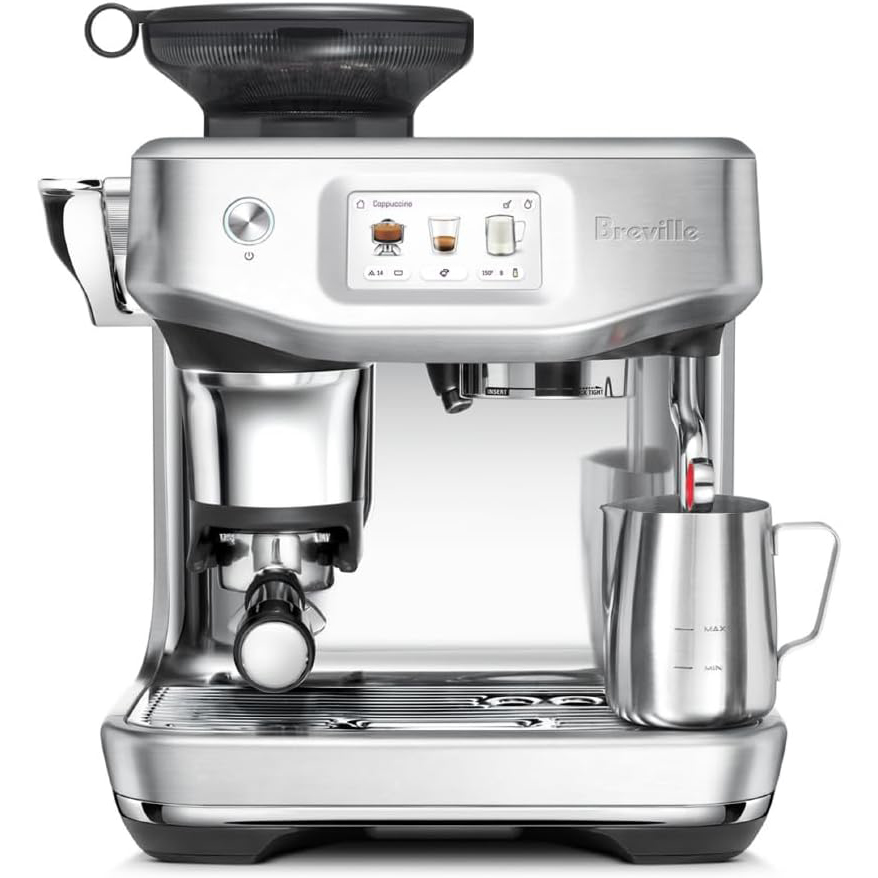
The best espresso coffee maker
This fully automatic machine from Breville (known as Sage in the UK) is our number-one recommendation if you're looking for a coffee maker that's simple to use, but doesn't compromise on performance. We spent two full months testing it, and were thoroughly impressed by the quality and consistency of its results.
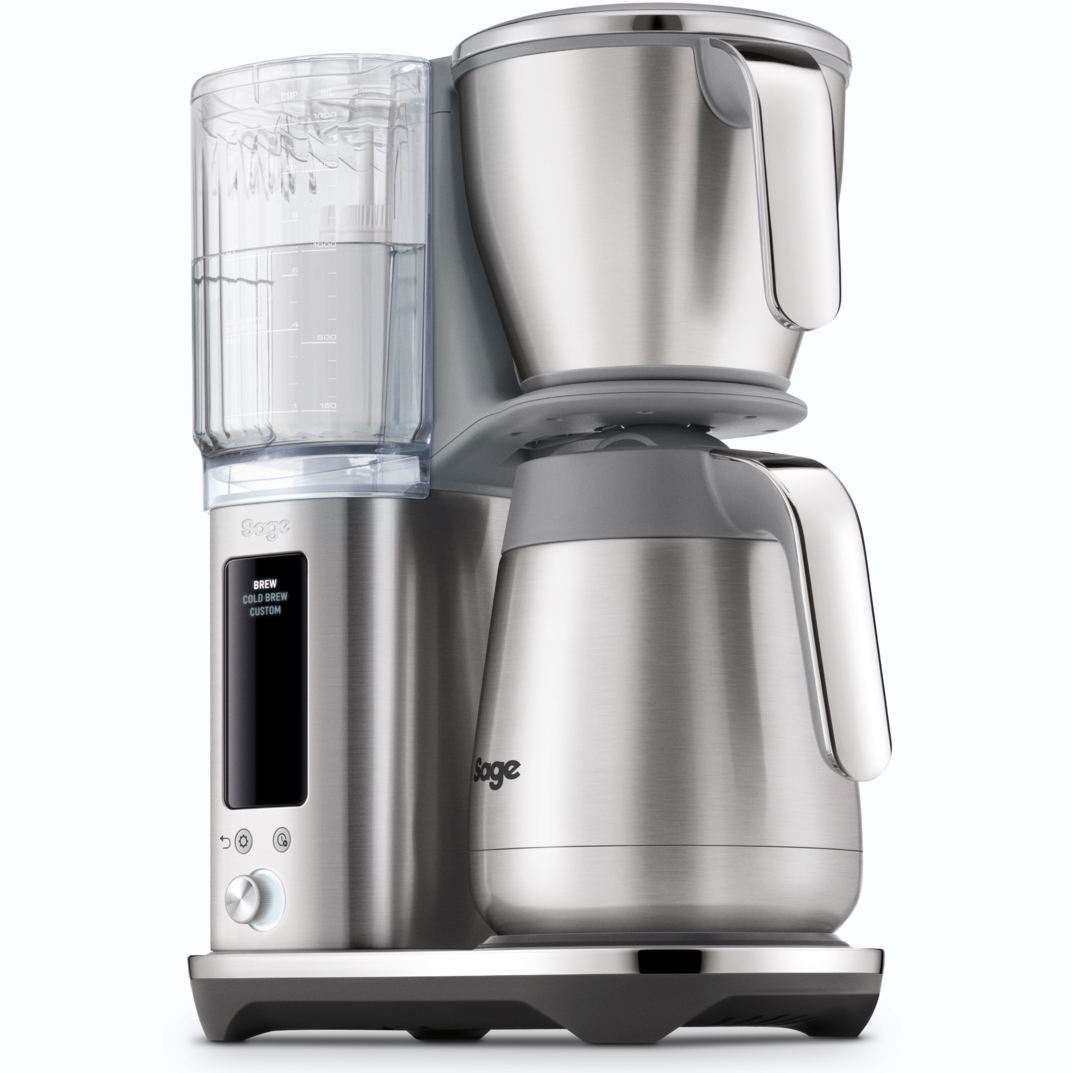
The best filter coffee maker
The Sage Luxe Brewer Thermal is a brilliant drip coffee maker that offers a handful of tools to customize your brews, but never makes things more complicated than they need to be. Its best features include a removable water tank, delayed start, cold-brew function, and an excellent insulated carafe that kept my coffee hot for hours in testing.
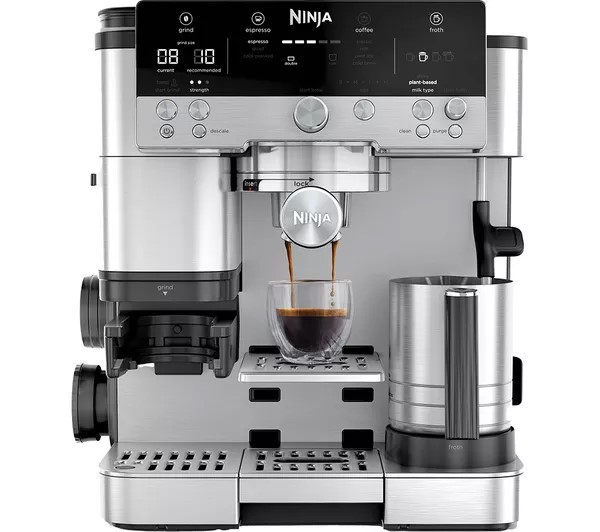
The best all-in-one coffee maker
The Ninja Luxe Café is a multifunctional coffee maker that can prepare espresso, drip coffee, and cold brew all in one, and even includes an automatic milk-frothing system. It's rare to find a coffee maker that does everything well, but the Luxe Café nails it all. It's the only coffee maker you need, and it costs a lot less than you might expect too.
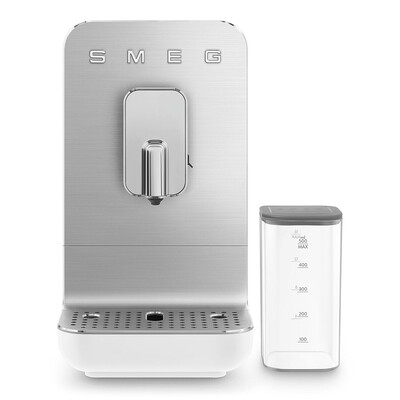
The best automatic coffee maker
This great-looking bean-to-cup espresso machine handles the entire coffee making process from start to finish - all you need to do is choose which drink you want. Our reviewer was very impressed by the quality of the espresso, which always had a rich flavor and golden crema, though bear in mind that the milk frother works best with dairy.
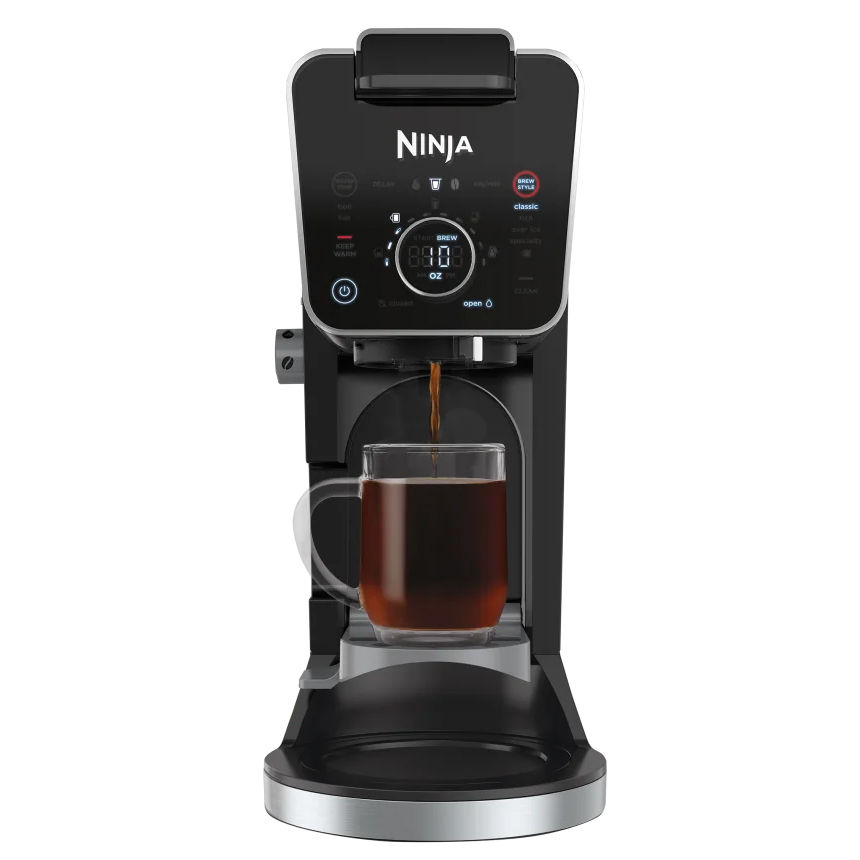
The best coffee maker for K-Cups
This coffee maker lets you use either ground coffee or K-Cups, giving you more options than a typical drip coffee maker. Both options worked well in our tests, and we were particularly impressed by the cold brew setting, which created a drink that never tasted watered down. There's a milk frother too, which is unusual for a drip machine.
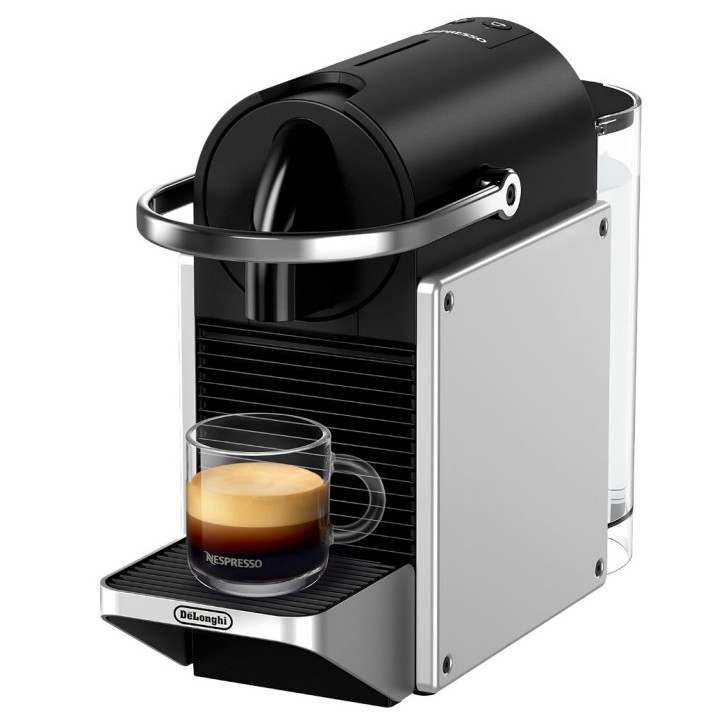
The best Nespresso coffee maker
Krups makes some of the best coffee-brewing equipment around (I swear by its grinders) and this compact Nespresso machine is no exception. The company is best known for its manual coffee makers, and has used its expertise to take brewing from a capsule to the next level, producing delicious, creamy coffee in record time.

The best coffee maker for cold brew
If your regular order is complicated enough to give baristas a headache, the Jura J10 is the best coffee maker for you. It not only brews exceptional espresso and foams milk to perfection, it also creates the best cold brew of any machine I've tested, using high-pressure pulses of water to create an authentically smooth, well-rounded flavor profile.
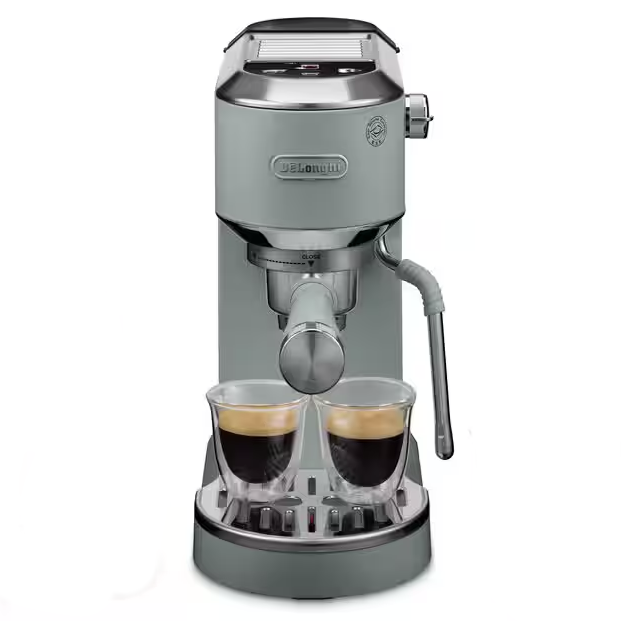
The best small coffee maker
The De'Longhi Dedica Duo is a fantastic little espresso machine that's much better quality than other entry-level coffee makers. It's well-build with quality components, maintains the pressure necessary for well-extracted coffee, and boasts a cold infusion option that really works, delivering mellow, well-rounded shots for iced drinks.
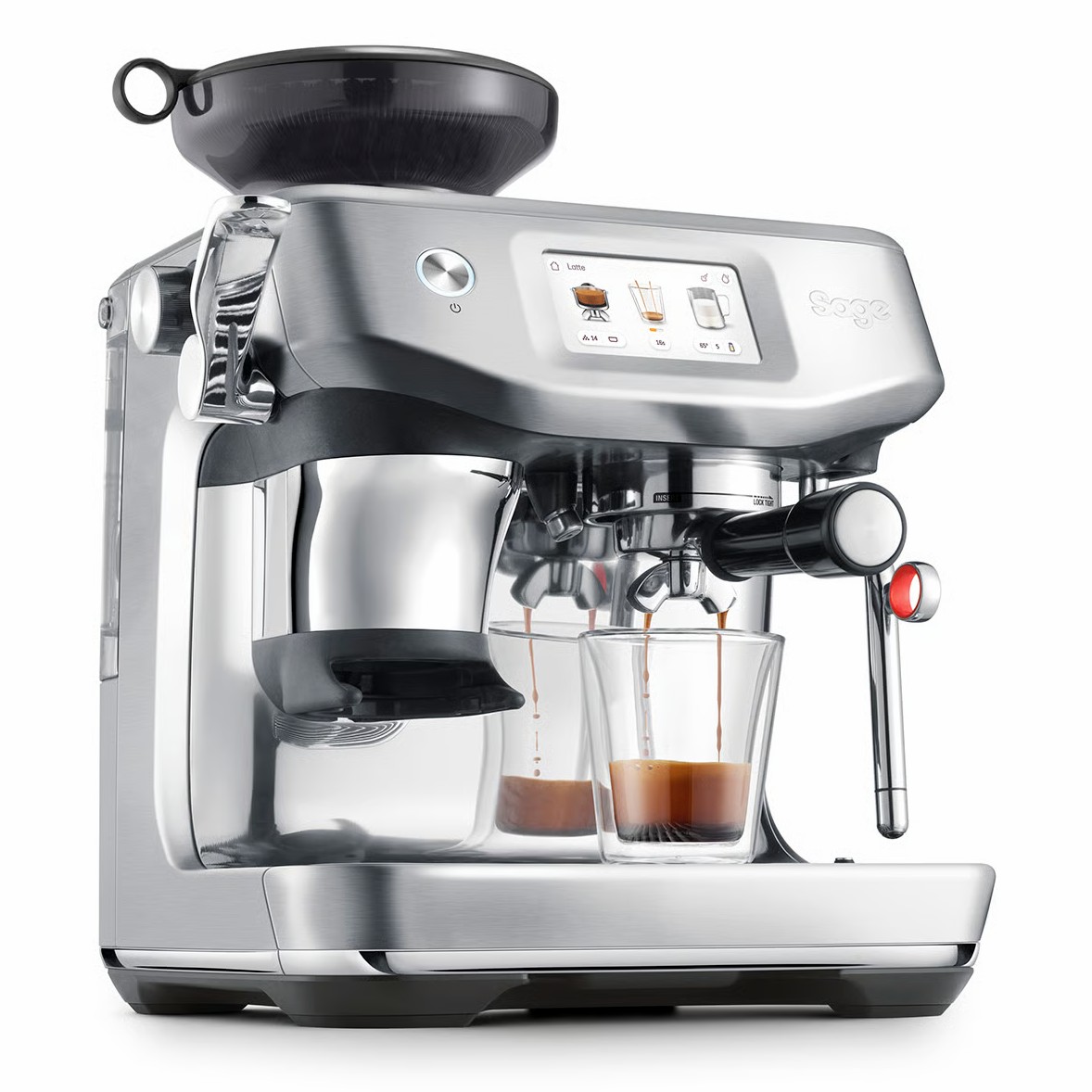
The best coffee maker for plant milk
This updated version of the Barista Touch Impress semi-automatic espresso machine features cold brewing, and has an automated steam wand that works particularly well when texturizing plant milks (whether oat, soy, or even rice). During tests it proved super easy to use, with a clever mess-free tamping system.
Meet the expert

Cat has been a tech journalist for over 10 years and is an SCA (Specialty Coffee Association) certified barista, so you can trust her to recommend the best coffee maker for your kitchen, whatever your budget and level of experience.
The best coffee makers
Why you can trust TechRadar
The best espresso maker
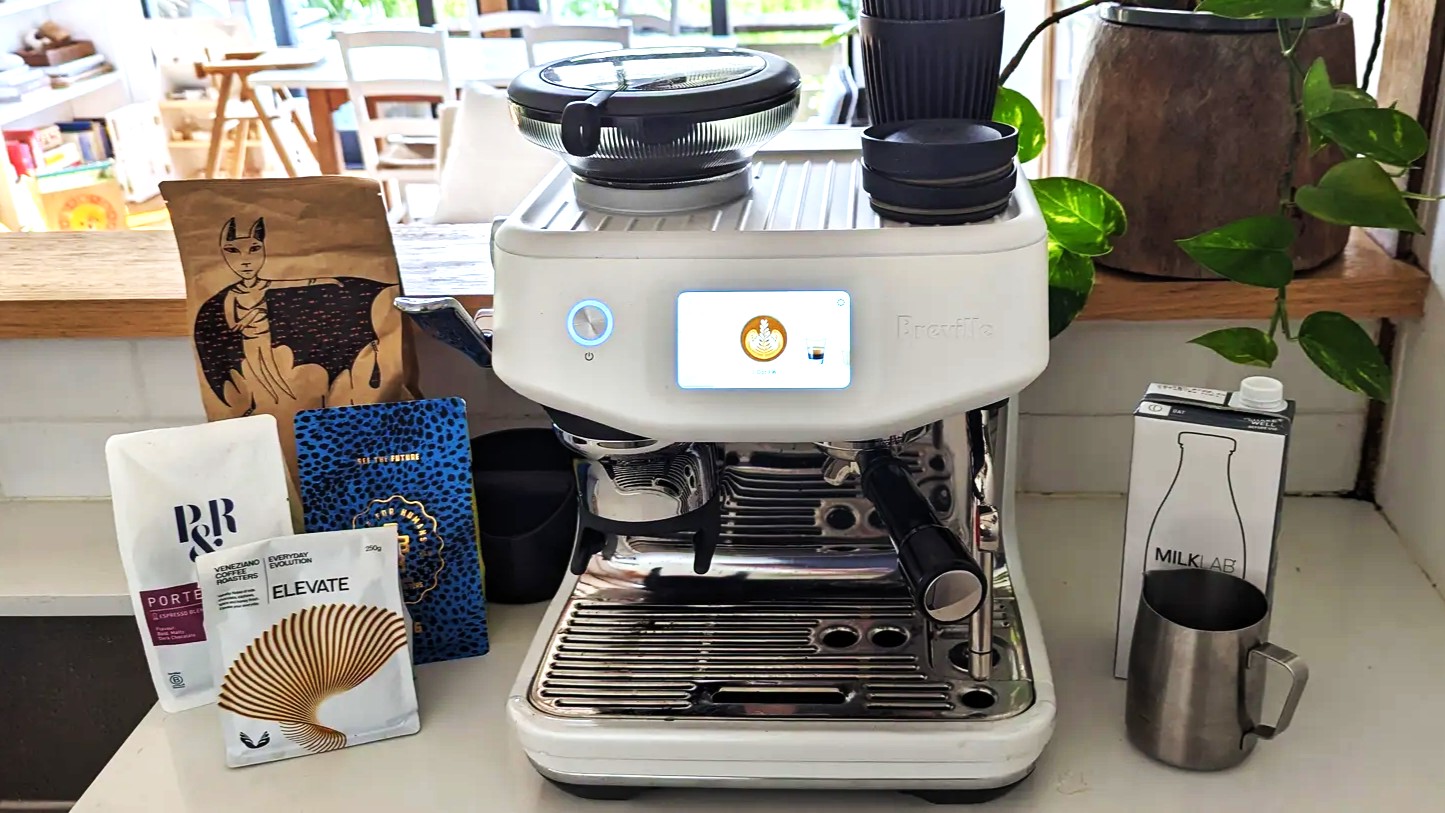
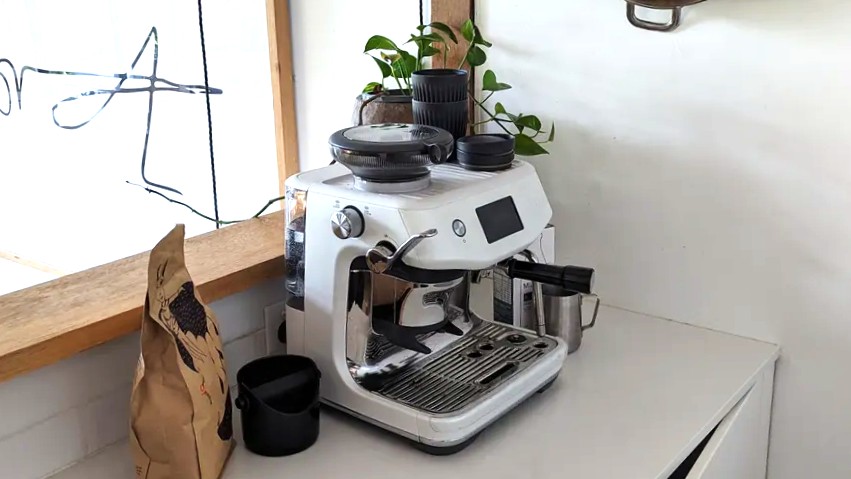

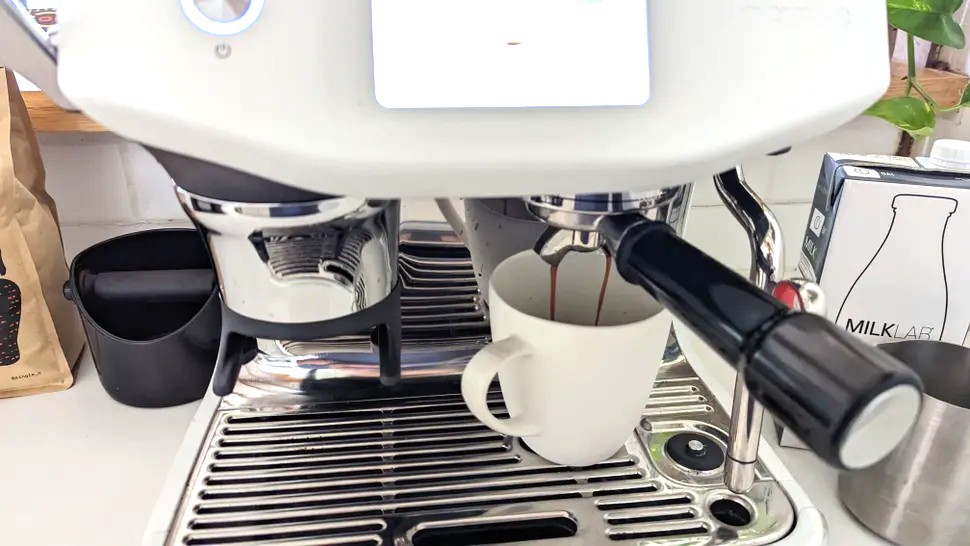
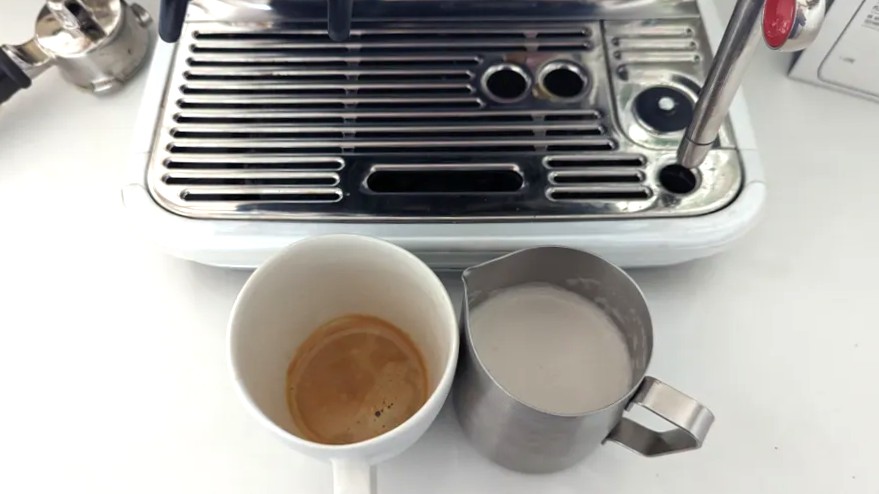
Specifications
Reasons to buy
Reasons to avoid
✅ You want a great value coffee maker: This is very reasonably priced for a semi-automatic coffee maker.
✅ You're pretty new to coffee-making: This coffee maker will guide you through the full process, and offer guidance along the way.
❌ You've mastered a manual machine: The Barista Touch Impress could work well if you know your way around a manual coffee maker but don't have the time, but you're paying a premium for the automated features.
❌ You always user plant milk: There are dedicated modes for alternative milks, but you'll get better results from the AutoMilq system with dairy.
This coffee maker has held the top spot in our roundup of the best espresso machines for quite some time, thanks to its ease of use and ability to brew consistently rich, delicious espresso – even if you're a complete beginner.
We tested the Barista Touch Impress for a full two months, during which time we were particularly impressed by the Impress puck system, which is something we first saw on 2022's Barista Impress Express, but has now been paired with a bright touchscreen and automatic milk texturizing system to make preparing your favorite drinks even easier.
The machine doesn't just guide you through the process though – it also informs you what's happening (like how much coffee is going into the filter basket) and suggests what to do if your shot winds up under- or over-extracted, helping you adjust the grind size accordingly.
The automatic milk texturizing system (known as AutoMilq) is excellent as well, and offers presets for both dairy and plant milks. It's a single-boiler coffee maker, so you can't pull a shot of espresso and prepare milk simultaneously, but that's not a deal-breaker for us here because it's possible to schedule the automatic milk steamer to start as soon as the coffee is done.
Overall, an excellent choice whether you're a complete beginner or know your way around a coffee maker, but are short of time in the mornings.
Want to save on a Breville coffee machine? Visit our Breville coupons page for the latest discounts on premium home essentials.
Read our full Breville The Barista Touch Impress review
The best filter coffee maker
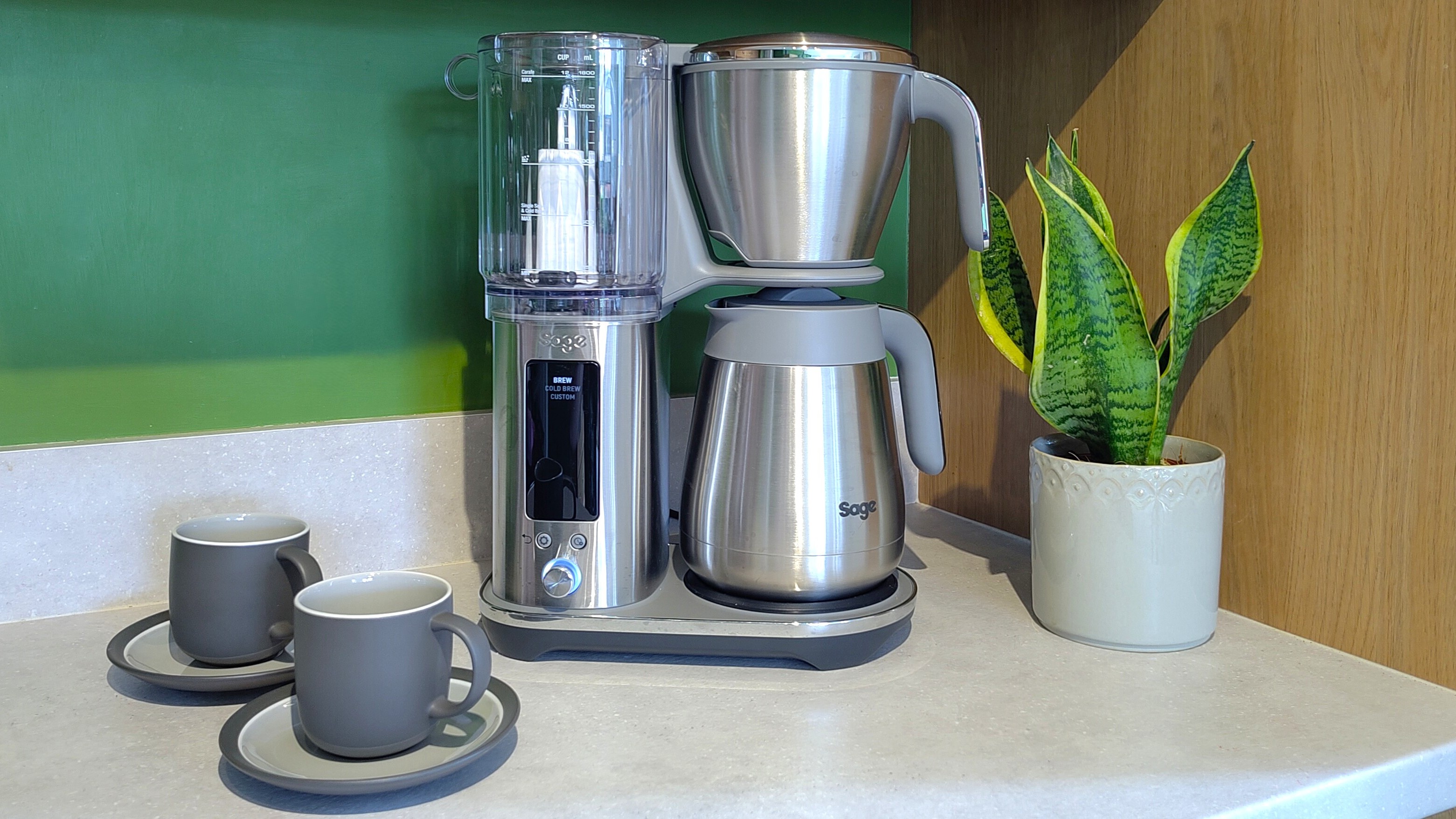
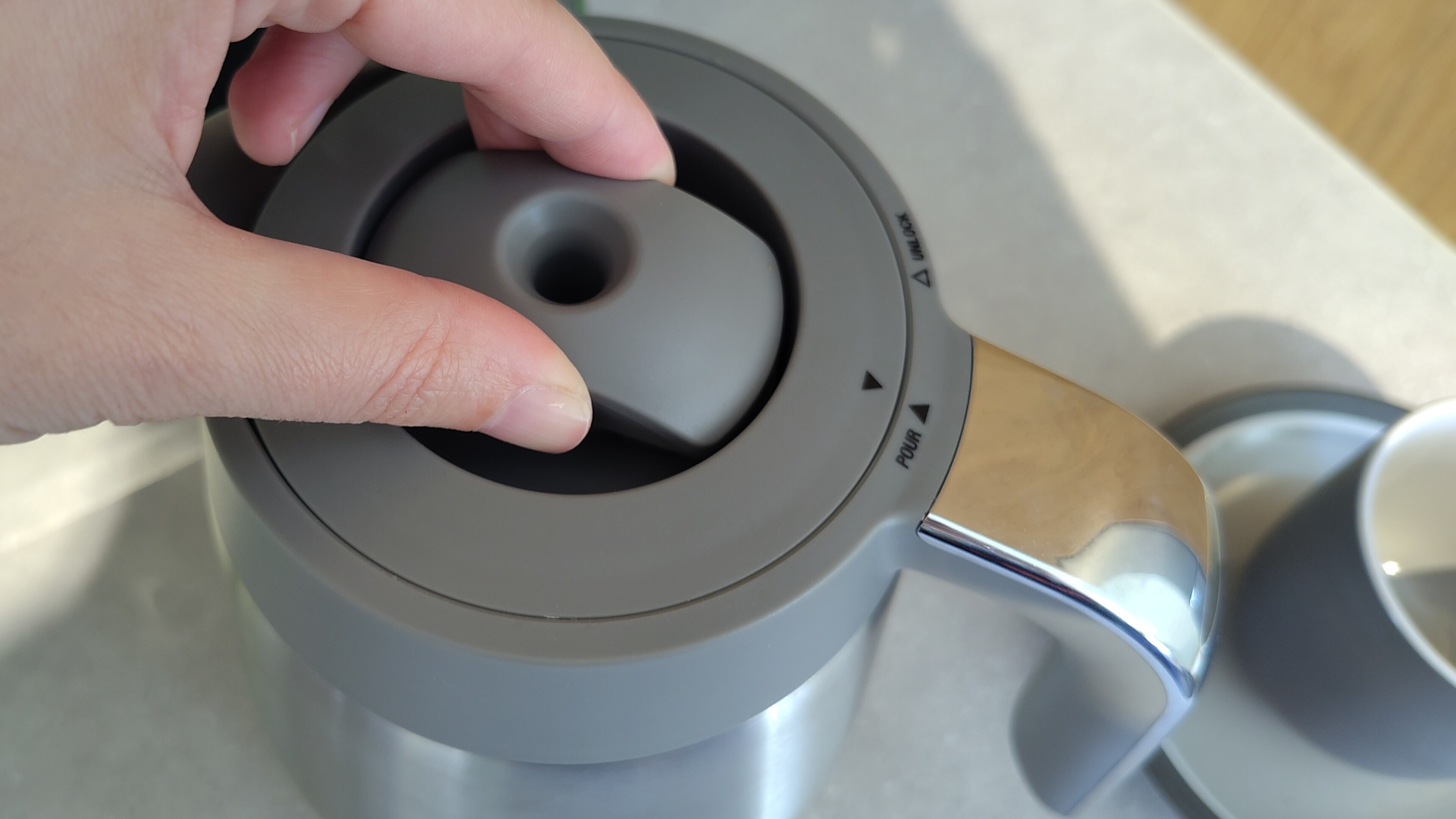
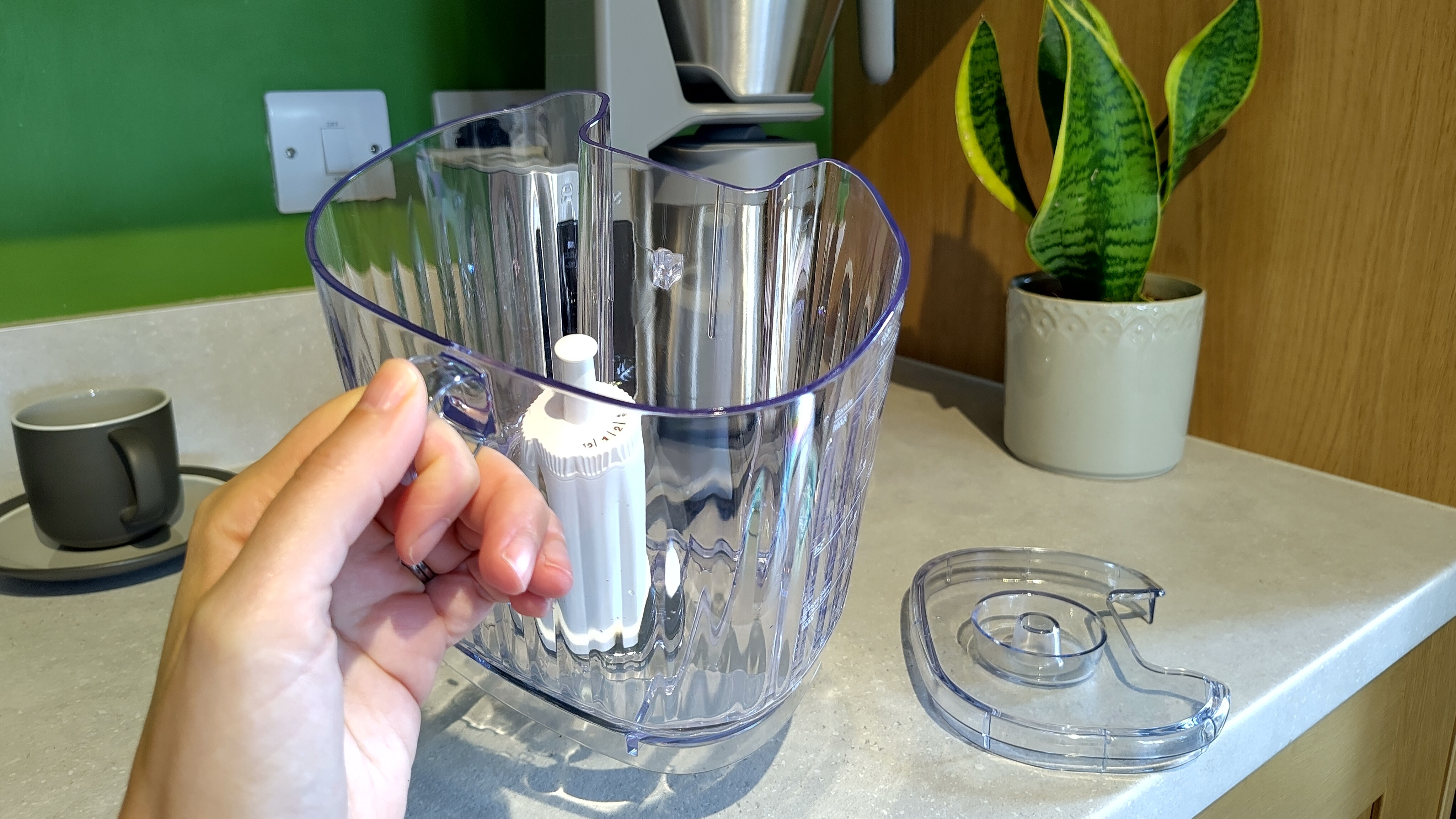
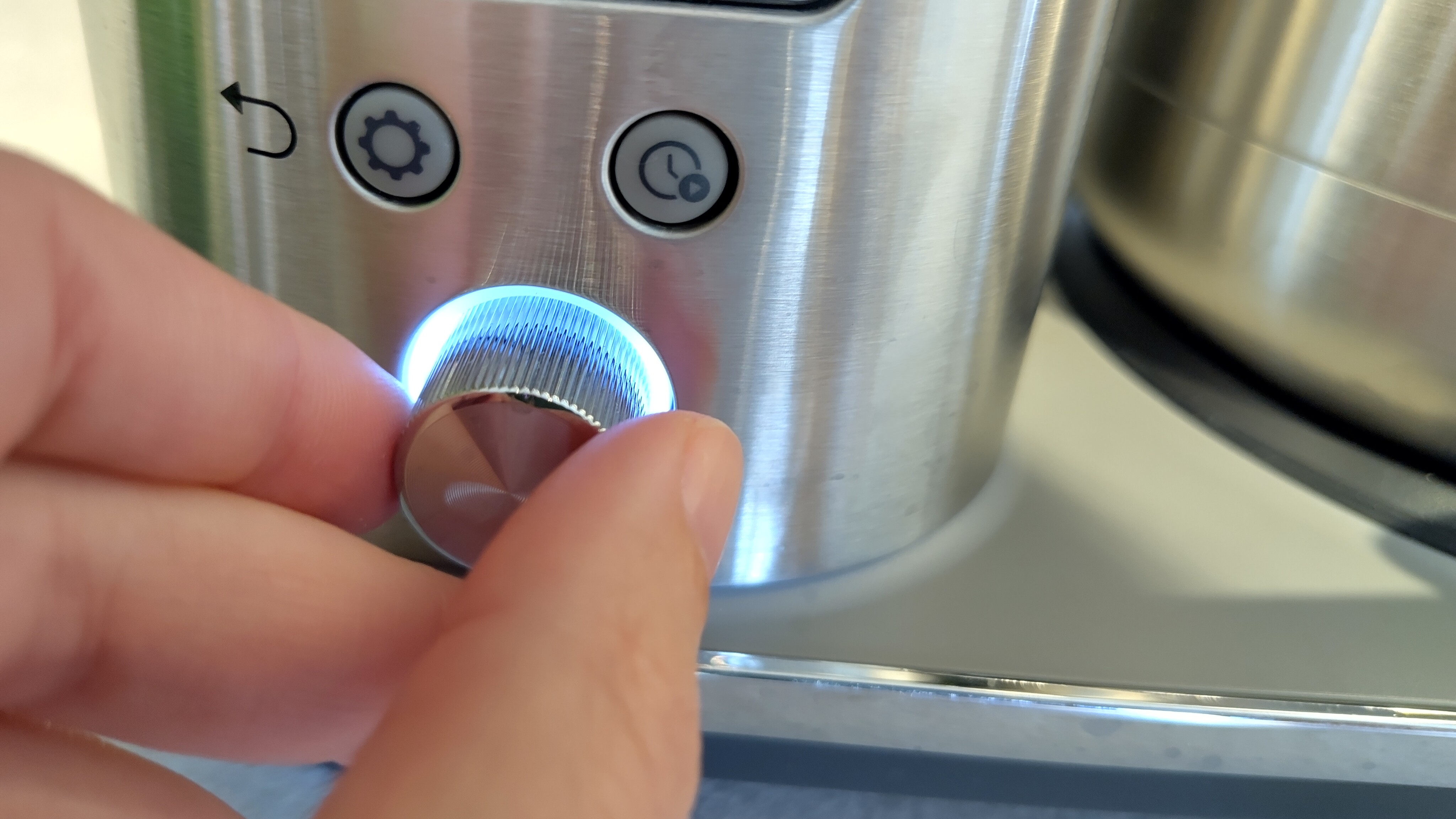
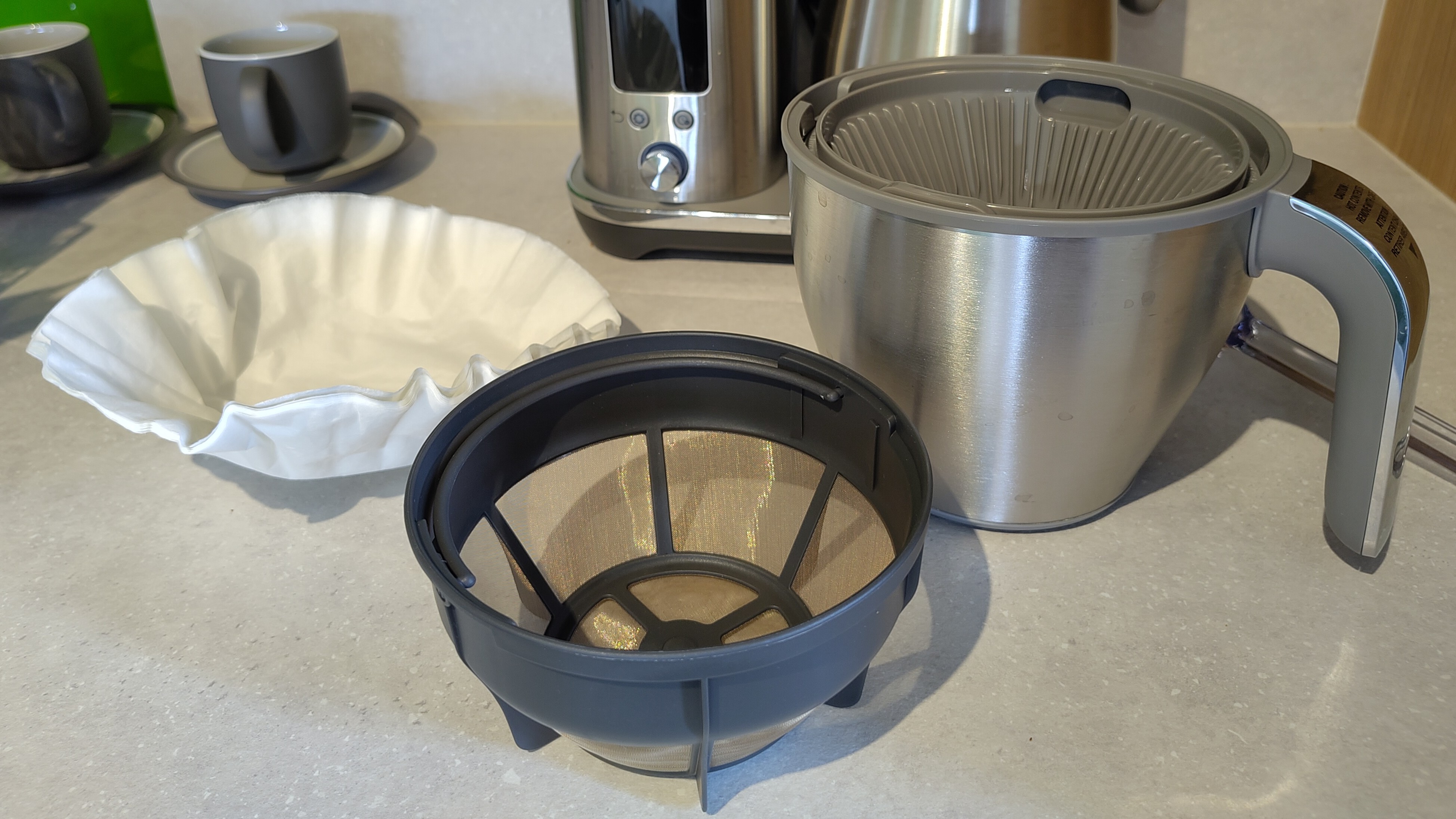
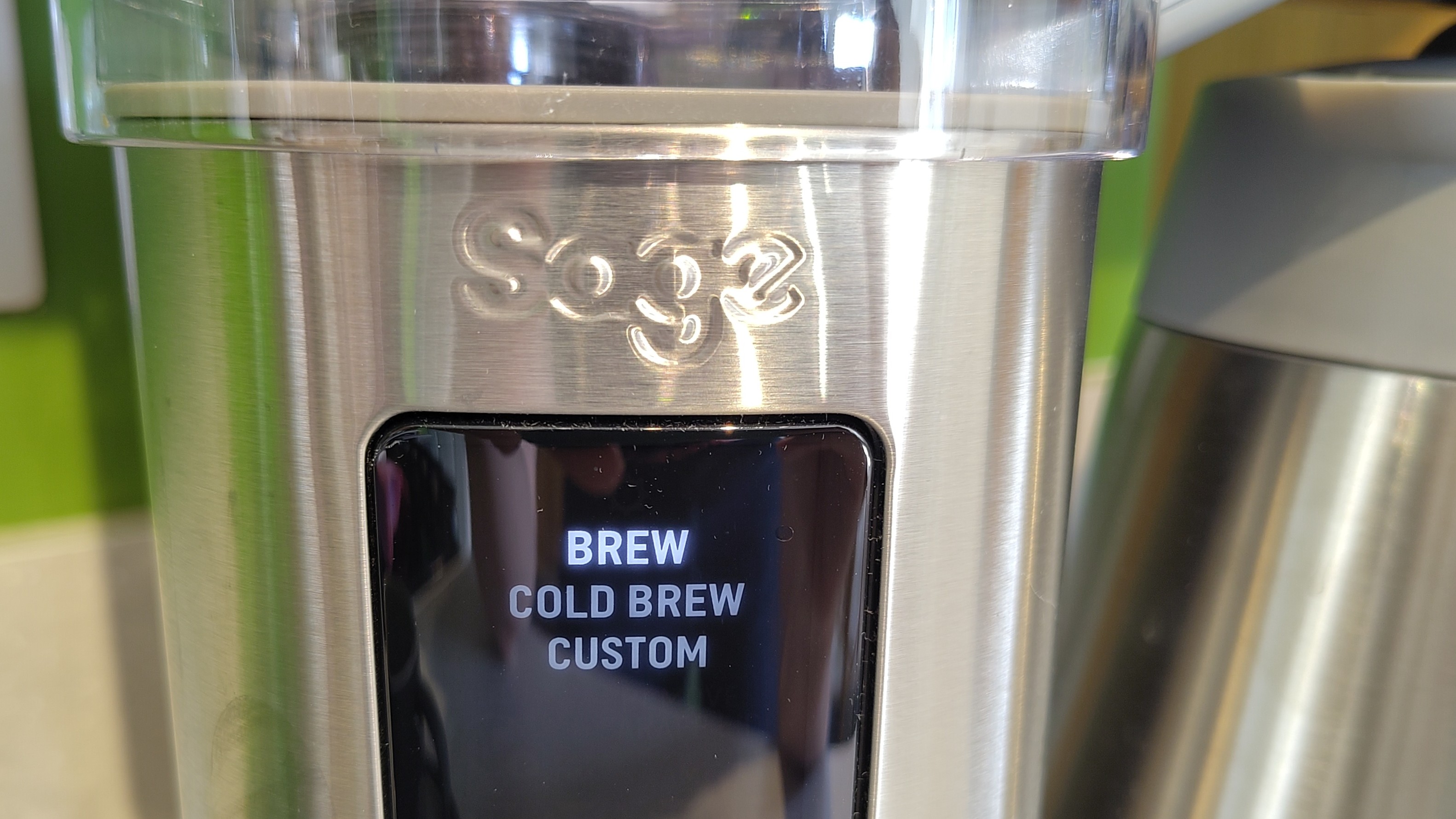
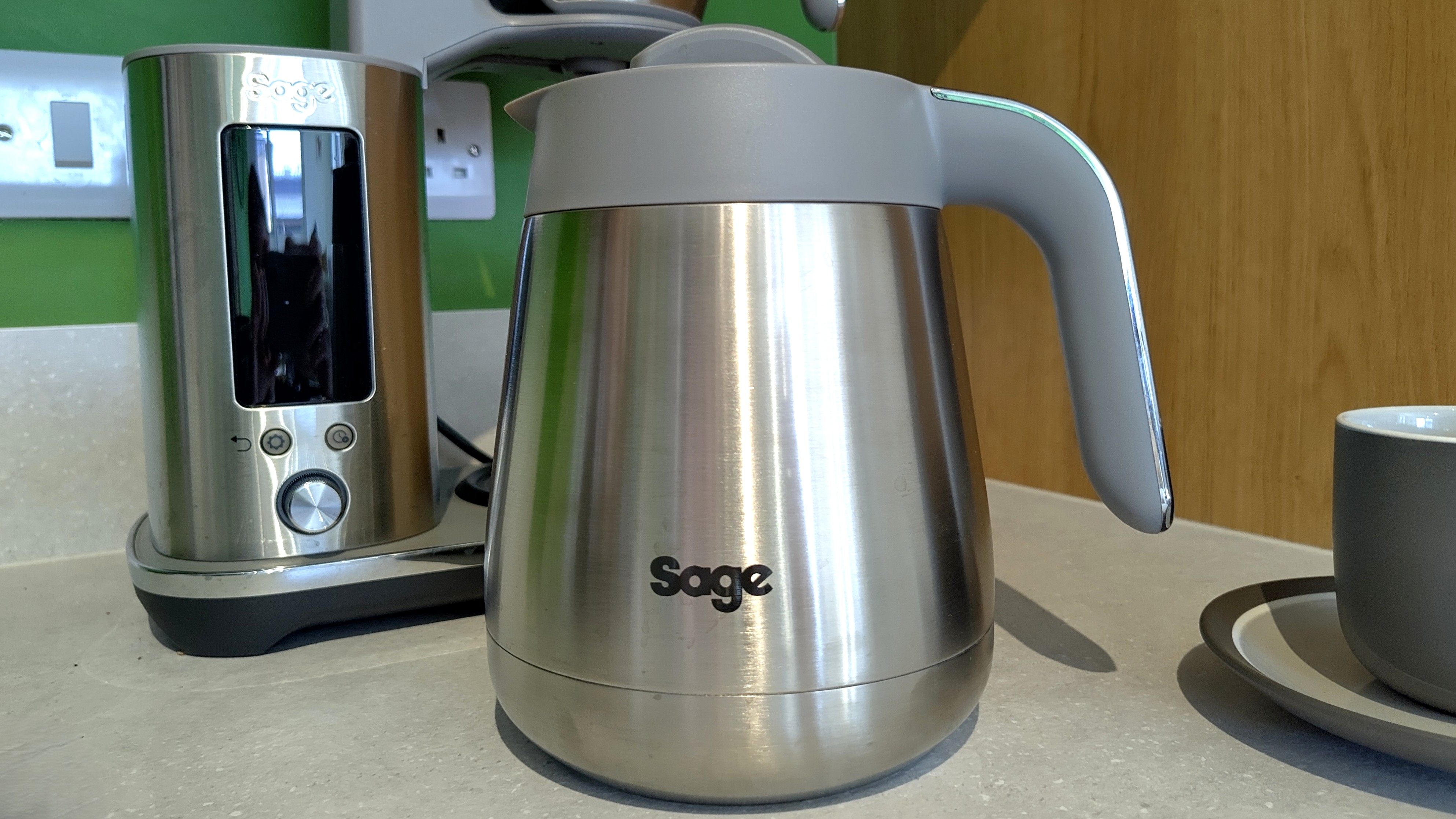
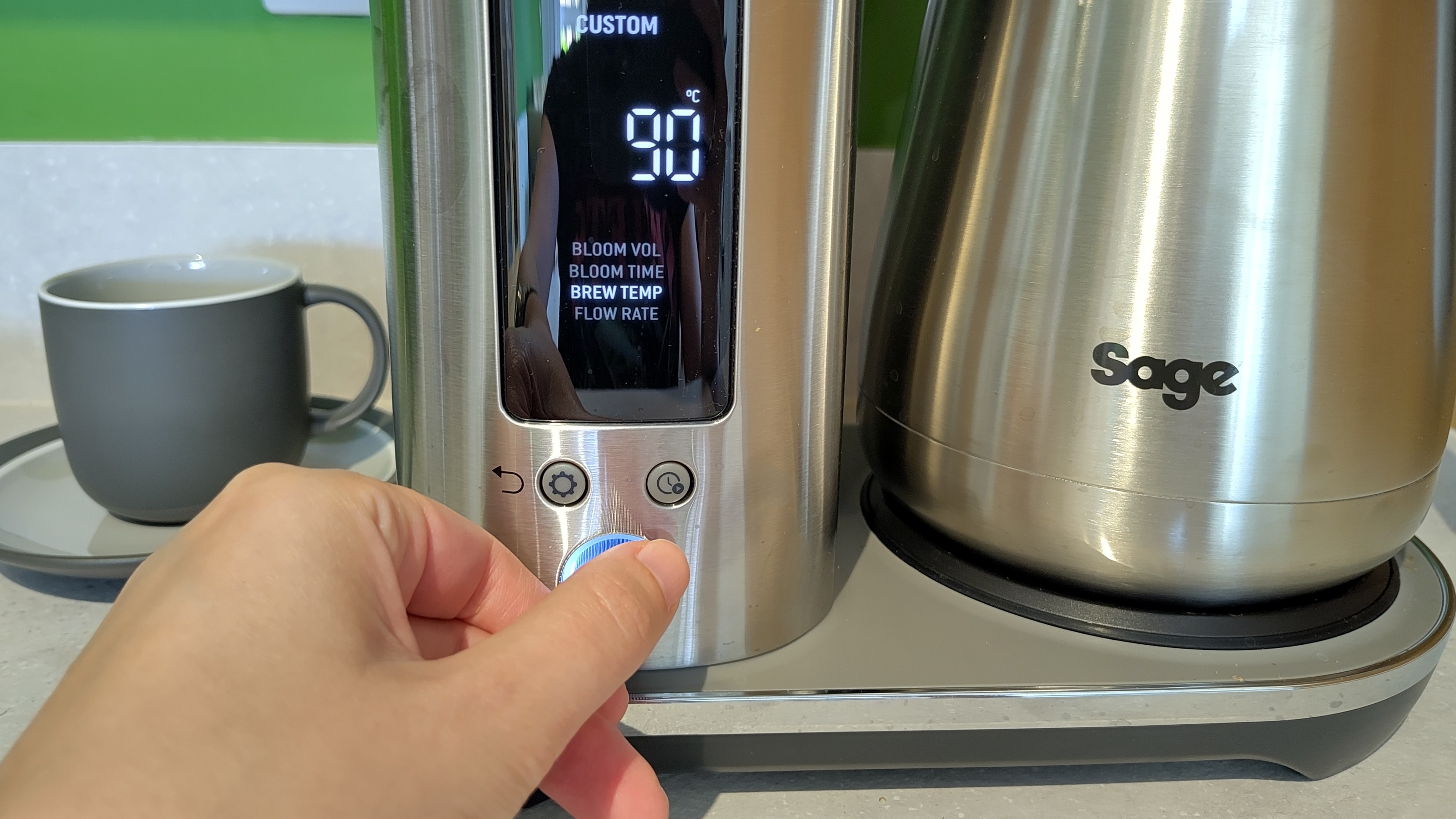
Specifications
Reasons to buy
Reasons to avoid
✅ You really enjoy drip coffee: The Luxe Brewer Thermal will do your beans justice, and keep your batch brew hot for hours without stewing it on a hotplate.
✅ You like authentic cold brew: The Luxe Brewer Thermal does it the traditional way by steeping the grounds for 24 hours. It's easy and makes virtually no mess.
❌ You want a traditional-looking batch brewer The Luxe Brewer Thermal has a distinctly modern look with its brushed metal finish and clean lines.
❌ You want the cheapest option: There are definitely cheaper drip machines available, although they don't offer the same performance.
Drip coffee machines are getting smarter – sometimes a little too smart, over-complicating what should be a pretty simple process – but not the Luxe Thermal Brewer, which is branded as Sage in the UK and Breville in the rest of the world.
This super modern-looking filter coffee machine gives you just a handful of options to tinker with, including brew temperature, pre-infusion temperature, and pre-infusion time (all of which can have a noticeable effect on your brewed coffee) but otherwise keeps things super straightforward. Just add water, coffee grounds, and you're good to go.
What elevates the Luxe Thermal Brewer above other drip machines is an array of thoughtful design touches, such as a water tank that can be removed for easy filling (no more spilling water on your counter while pouring it in from a pitcher), and an insulated carafe that's the best I've ever used. Even when only half-full, it kept my coffee at a perfect drinking temperature for over four hours. No need to keep your drink stewing on a hotplate.
Another great feature is the cold-brewing mode, which lets your coffee steep for 24 hours and beeps to let you know when it's done. It's incredibly easy, and there's no mess. The delayed start timer is an excellent feature too, letting you wake up to a piping hot brew every morning. It's not the cheapest machine of its kind, but I believe it's the best.
Read our full Sage Luxe Brewer Thermal review
The best all-in-one coffee maker
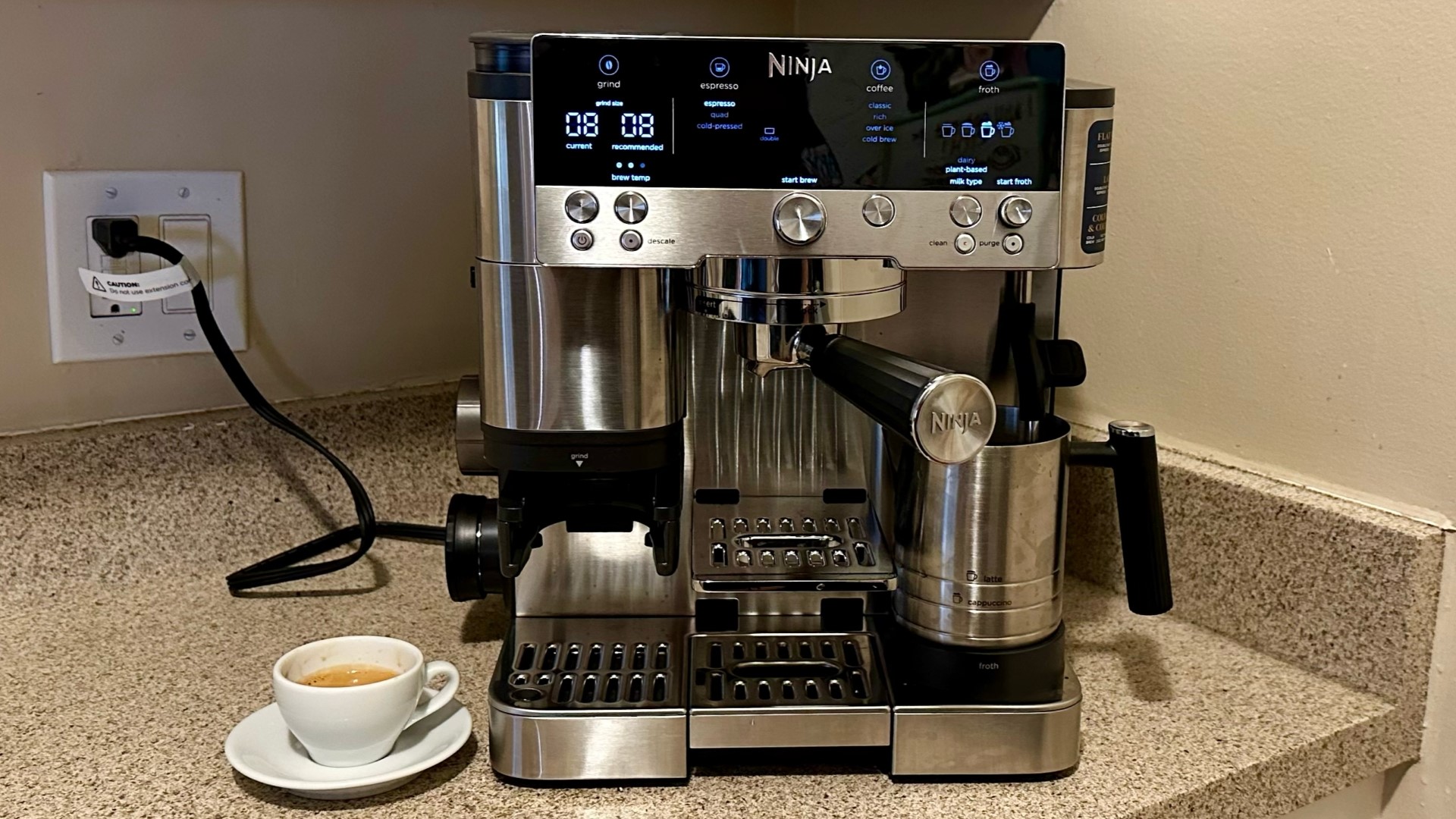
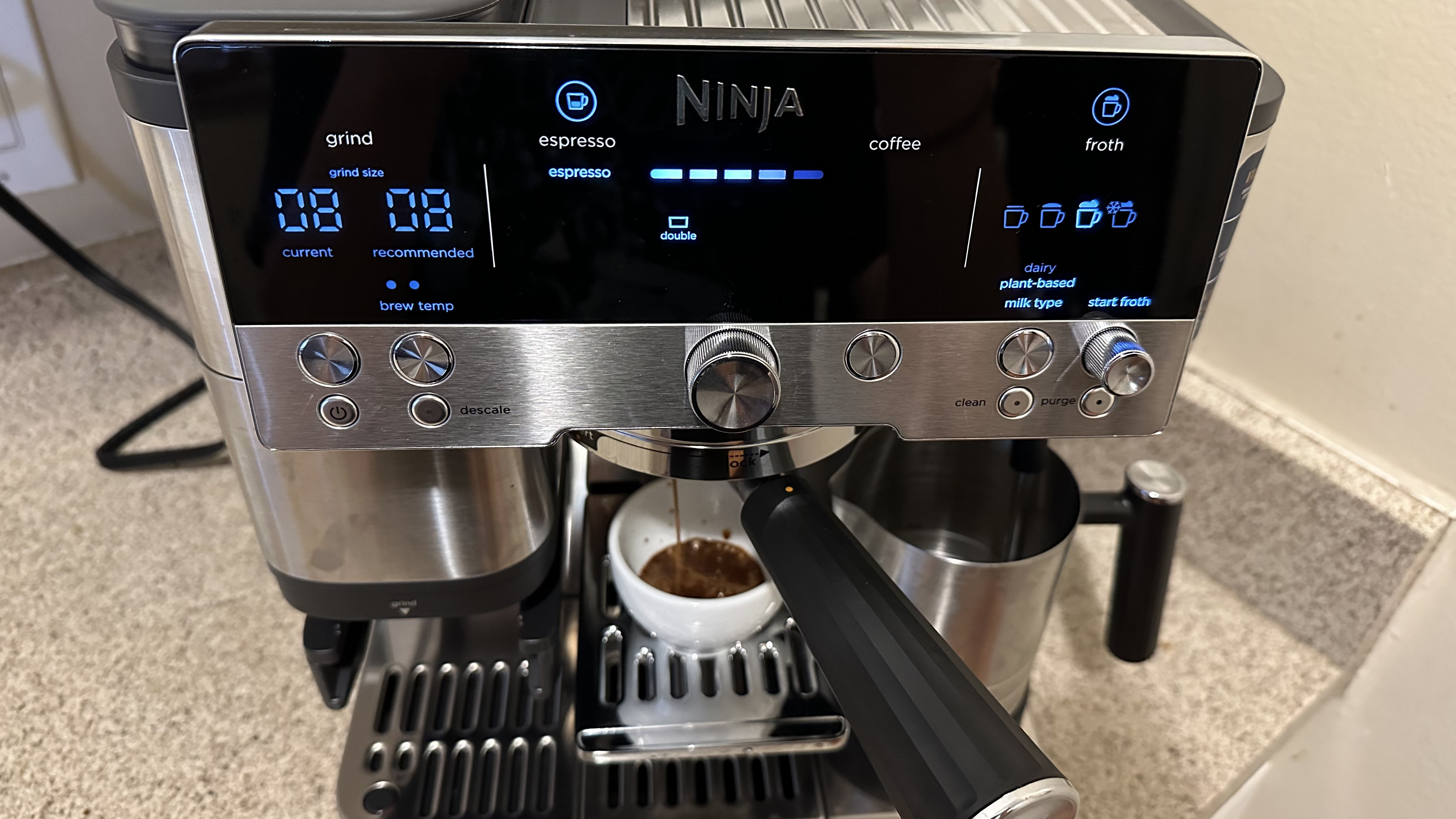
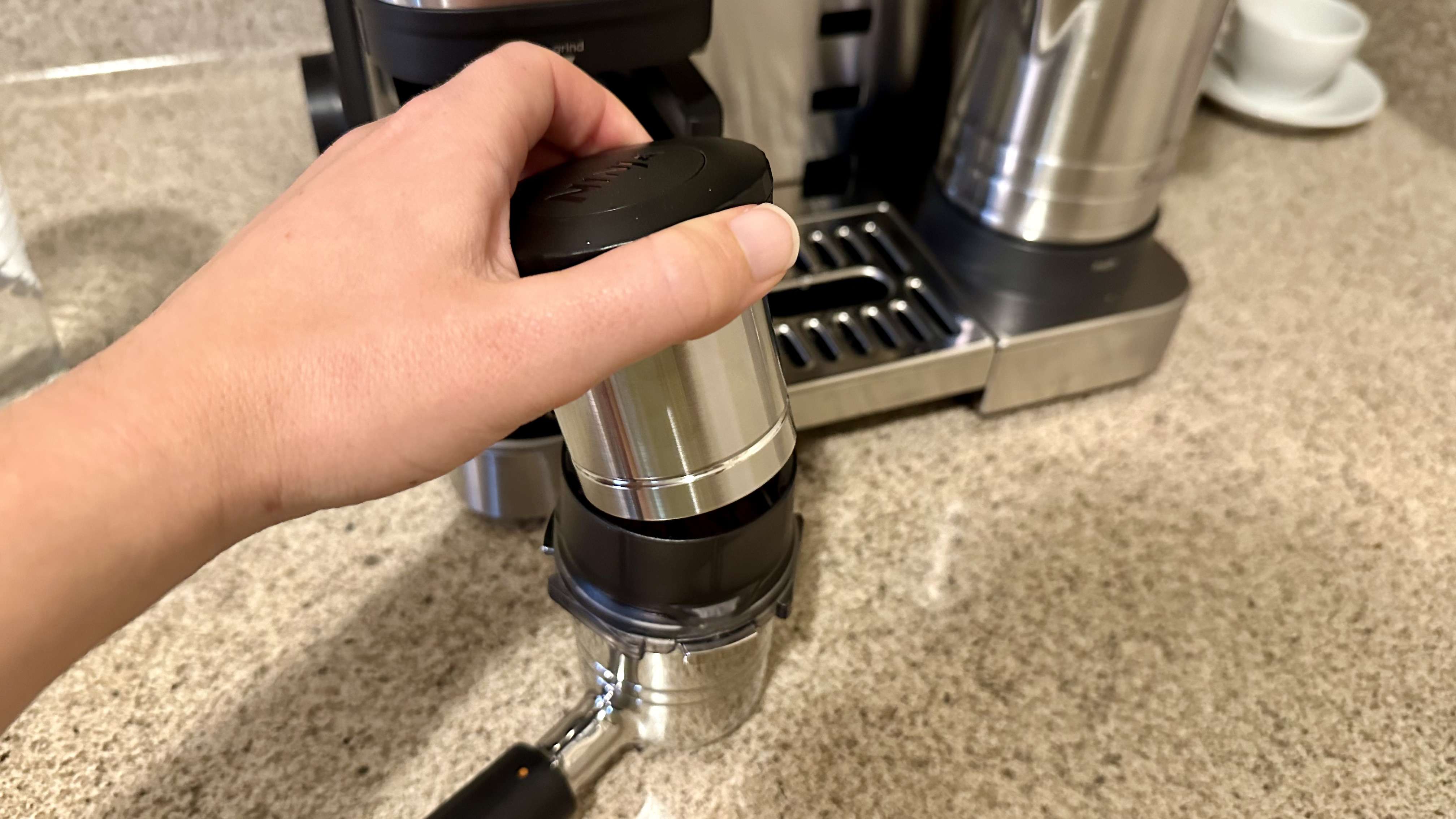
Specifications
Reasons to buy
Reasons to avoid
✅ You enjoy variety: If you can't choose between drip, cold brew, and espresso, the Ninja Luxe Café does it all.
✅ You want ease of use: It might look complicated, but this coffee maker is surprisingly straightforward to master.
❌ You want to brew big pots of coffee: You're limited to 18oz at a time. If you want to make a pot, the Ninja DualBrew Pro could be a better option.
❌ You want to steam plant milk: Automatic milk frothers tend to be optimized for dairy, and this one is no exception.
Can't choose between espresso, drip coffee, and cold brew? No problem, the Ninja Luxe Café does it all – and does it well, guiding you through the process of making your ideal drink like your personal, patient barista. It even impressed the SCA (Specialty Coffee Association) tutor, when mentioned it when I was taking my exam.
It's an impressive-looking machine, and our tester was surprised how easy it was to master. The Luxe Café suggests a suitable grind size and dosage for the drink you want to make, and the result was consistently well extracted coffee with minimal effort. Espresso turned out beautifully, though we found the choice of four different settings to be unnecessary for filter coffee - regular and cold brew would have been fine.
The automatic milk frother worked well with our tester's 2% milk, creating creamy microfoam for lattes and cappuccinos. It wasn't so well suited to oat milk though, which we've found tends to be the case with auto milk systems. In all other respects, the Luxe Café is hard to fault, and if you want a machine that can produce drip coffee, cold brew, and espresso drinks all in one, you need look no further.
Want to save on a Ninja coffee machine? Visit our Ninja Kitchen coupons page for the latest deals on cooking essentials.
Read our full Ninja Luxe Café review
The best automatic coffee maker
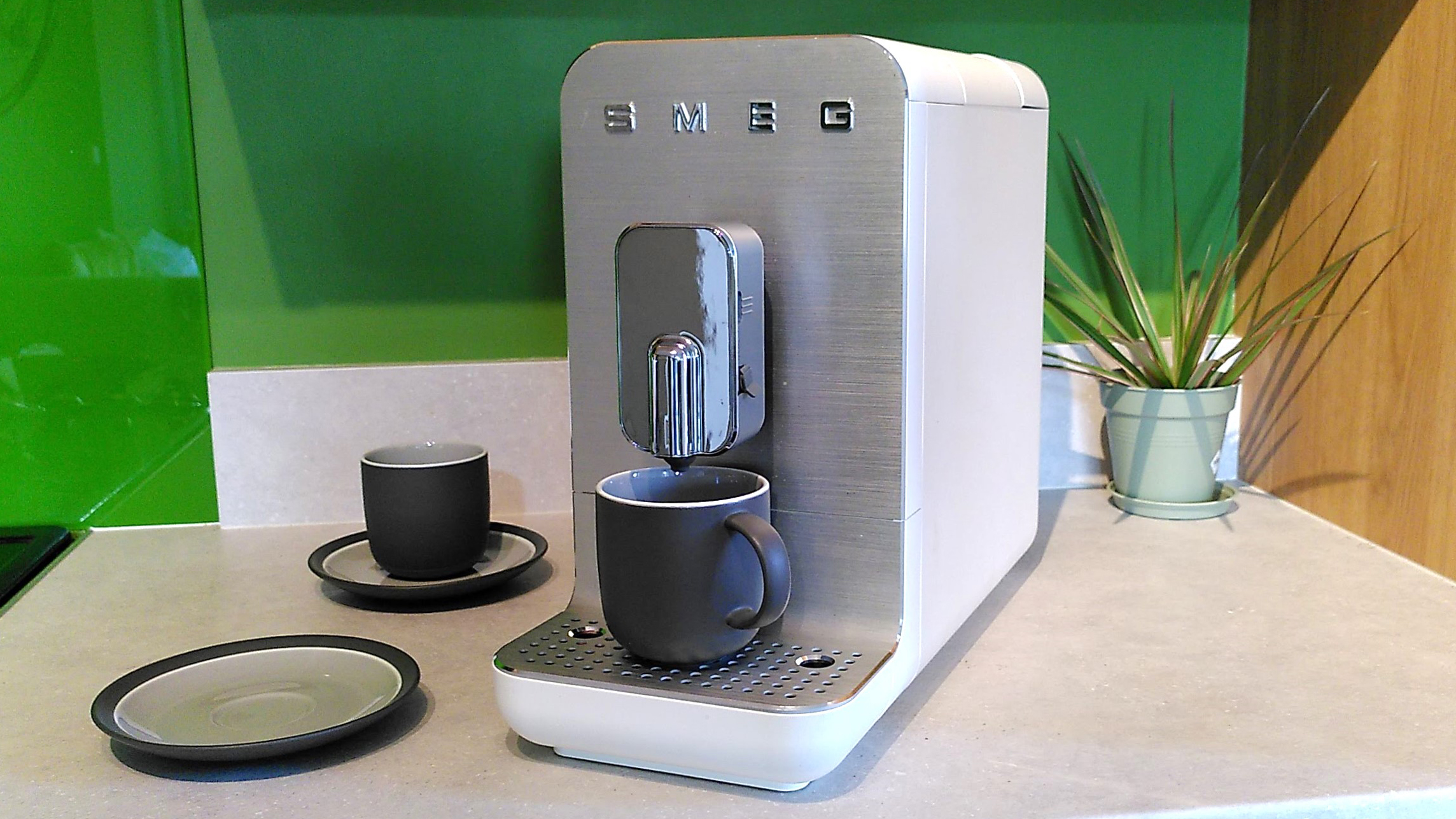
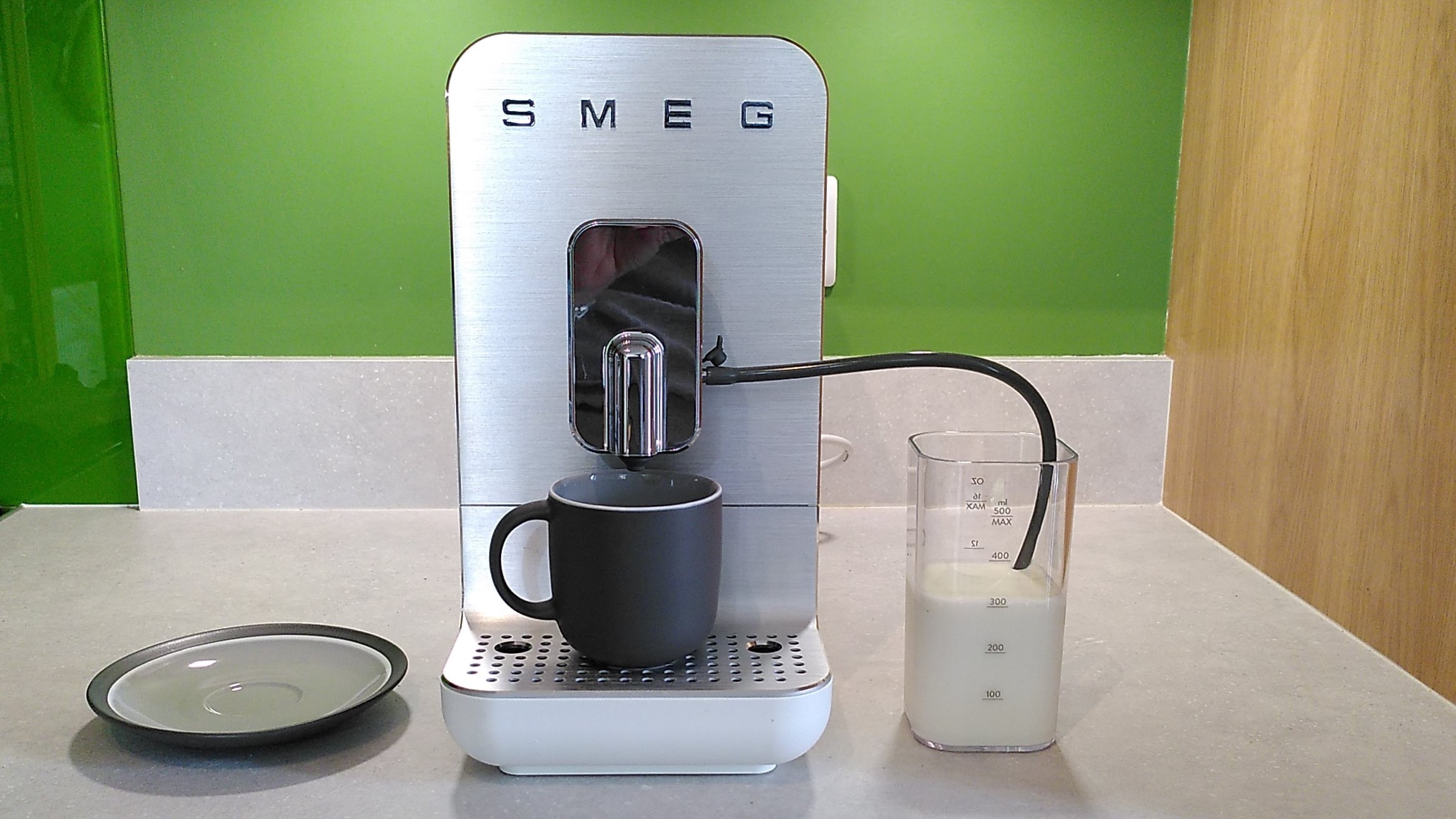
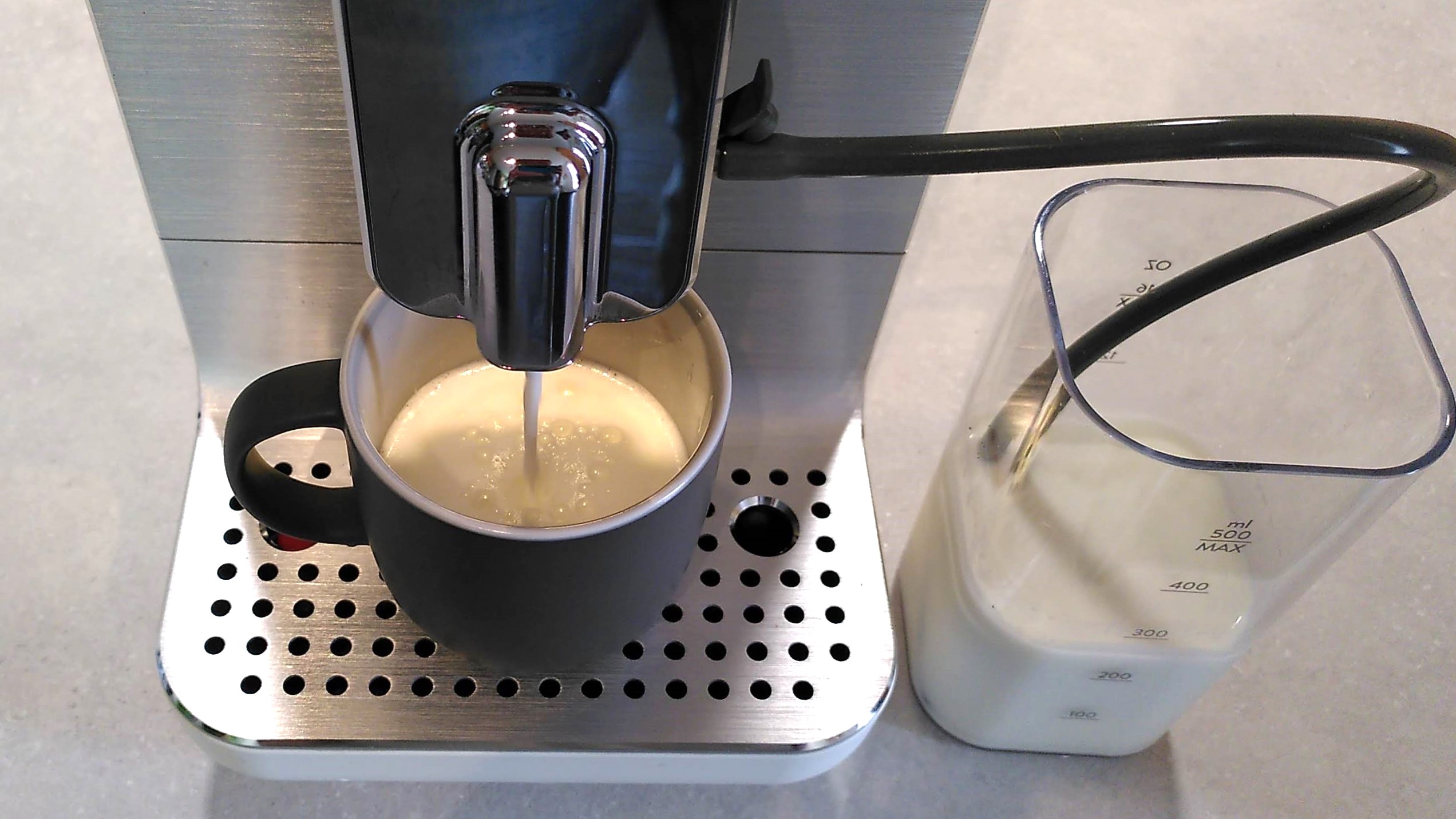
Specifications
Reasons to buy
Reasons to avoid
✅ You make several coffees daily: Bean-to-cup coffee makers are never cheap, so you need to be a frequent coffee drinker to justify the price.
✅ You don't want to tinker: The BCC13 weighs, grinds, extracts, froths and pours with no input from you - perfect if you want to be hands-off.
❌ Coffee is your hobby: There's very little scope for creativity here, so if you want to experiment then a fully manual machine would be a better choice.
❌ You prefer plant milk: Like the Ninja Luxe Café above, the Smeg BCC's auto milk frother works best with dairy.
If you want to make cappuccinos and lattes, you have two options: look for a coffee maker with a manual steam wand (like the dependable Gaggia Classic) and master the art of aerating and stretching, or choose a machine with an automatic milk frothing system that will do the hard work for you.
The Smeg BCC13 is the latter type, and brews consistently good, well extracted coffee from start to finish, with no effort from you whatsoever. Just load beans into the hopper, add water to the tank and milk to the dispenser, and choose a drink type using the menu on the top (you'll need to refer to the manual the first few times to know what each button represents) and the BCC13 will do the rest.
During our tests, we were very impressed by the quality of the espresso produced by the BCC13, which was delicious and well extracted every time, with a rich golden crema. Dairy milk foamed well using the auto frothing system, though plant milk didn't fare quite so well (something Smeg does warn about). If you want to use alternative milks regularly, you might want to consider a simple espresso machine and a separate milk frother like the Dreo Baristamaker, which is designed to tackle soy, oat, almond etc.
Read our full Smeg BCC13 review
The best coffee maker for K-Cups
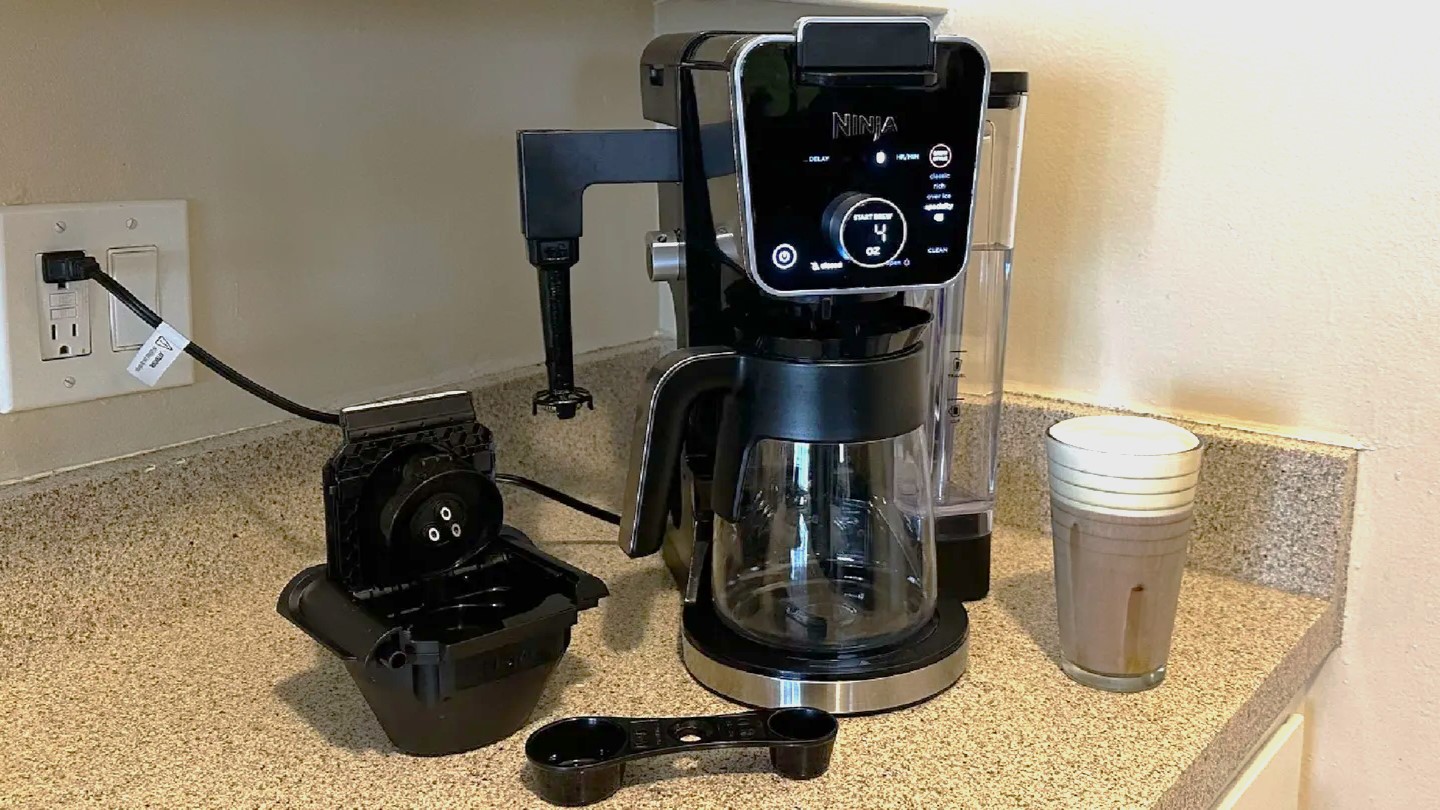
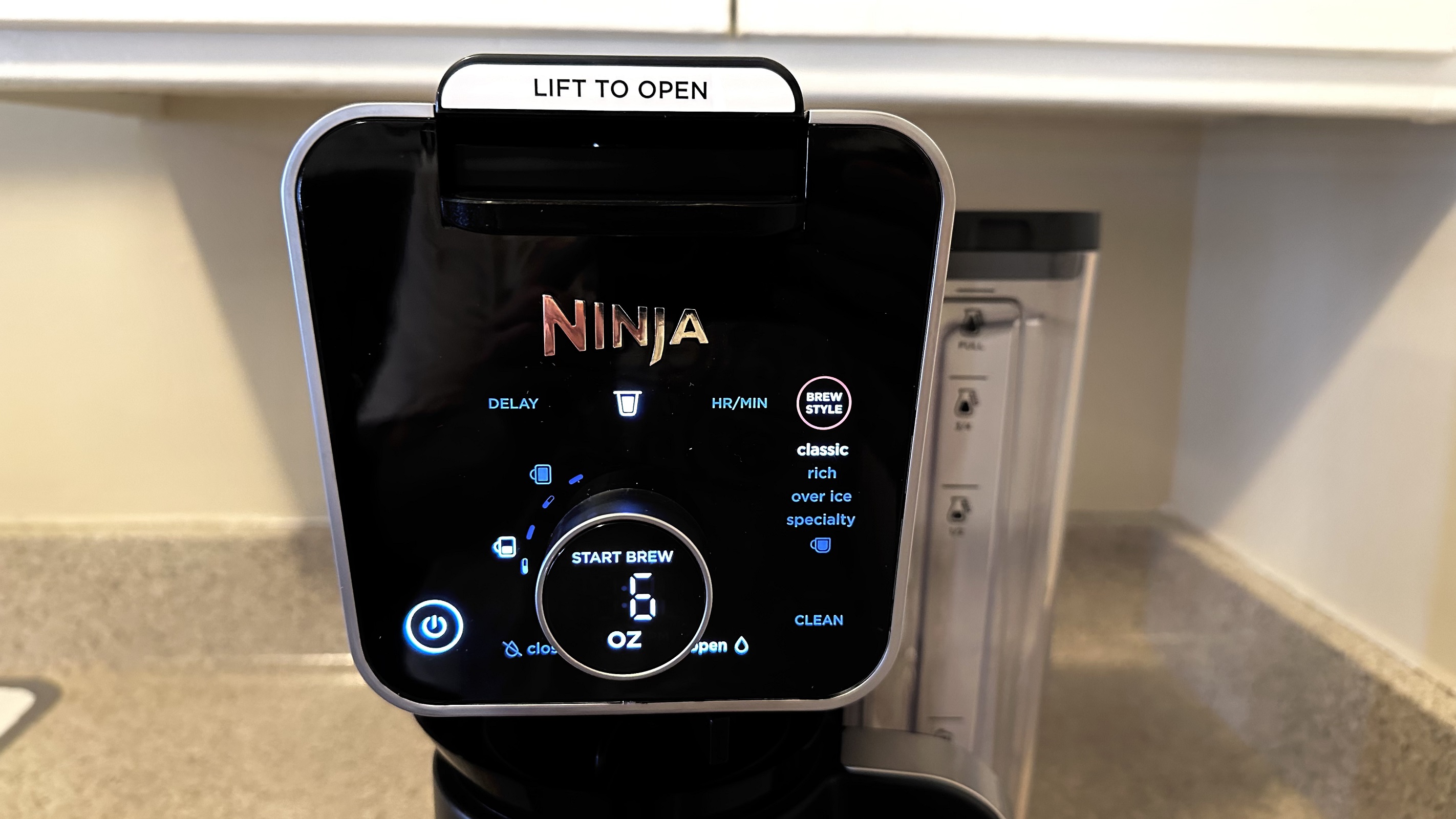
Specifications
Reasons to buy
Reasons to avoid
✅ You want to use ground coffee and K-Cup pods: The Ninja DualBrew Pro has an adaptor that lets you choose either.
✅ You drink coffee slowly: The hot plate can keep your drink warm for up to four hours.
❌ You sometimes want espresso: Although it has an 'espresso' setting, the DualBrew Pro can't compare to a shot pulled using an actual pressurized espresso machine.
❌ You're tight on space: This is larger than most drip coffee makers, so measure your counter first to make sure it will fit.
The Ninja DualBrew Pro is a two-in-one drip coffee maker, able to use either coffee grounds or K-Cups. We found the control panel a little more complicated than most other coffee machines we've tested, but we got the hang of it after the first few brews, and the rest of the DualBrew Pro is no harder to use than any other filter coffee machine.
We appreciated the indicator lights, which let you know how far along the brewing process the machine is, the mess-free design that closes the brew basket once it's done, and the well extracted coffee it produced every time, whether we used grounds or a cup. The cold brew setting was particularly impressive, producing a delicious drink that didn't taste watered down.
There's a water line for brewing tea (great if you don't have a kettle handy) and a milk frother, which is very unusual for a drip coffee maker. We wouldn't recommend the DualBrew Pro's 'espresso' setting, though. As you might expect from a drip coffee maker, it can't replicate the depth and richness of a real espresso shot. If you want a machine that can do both properly, take a look at the Ninja Luxe Café above.
Read our full Ninja DualBrew Pro review
The best Nespresso coffee maker
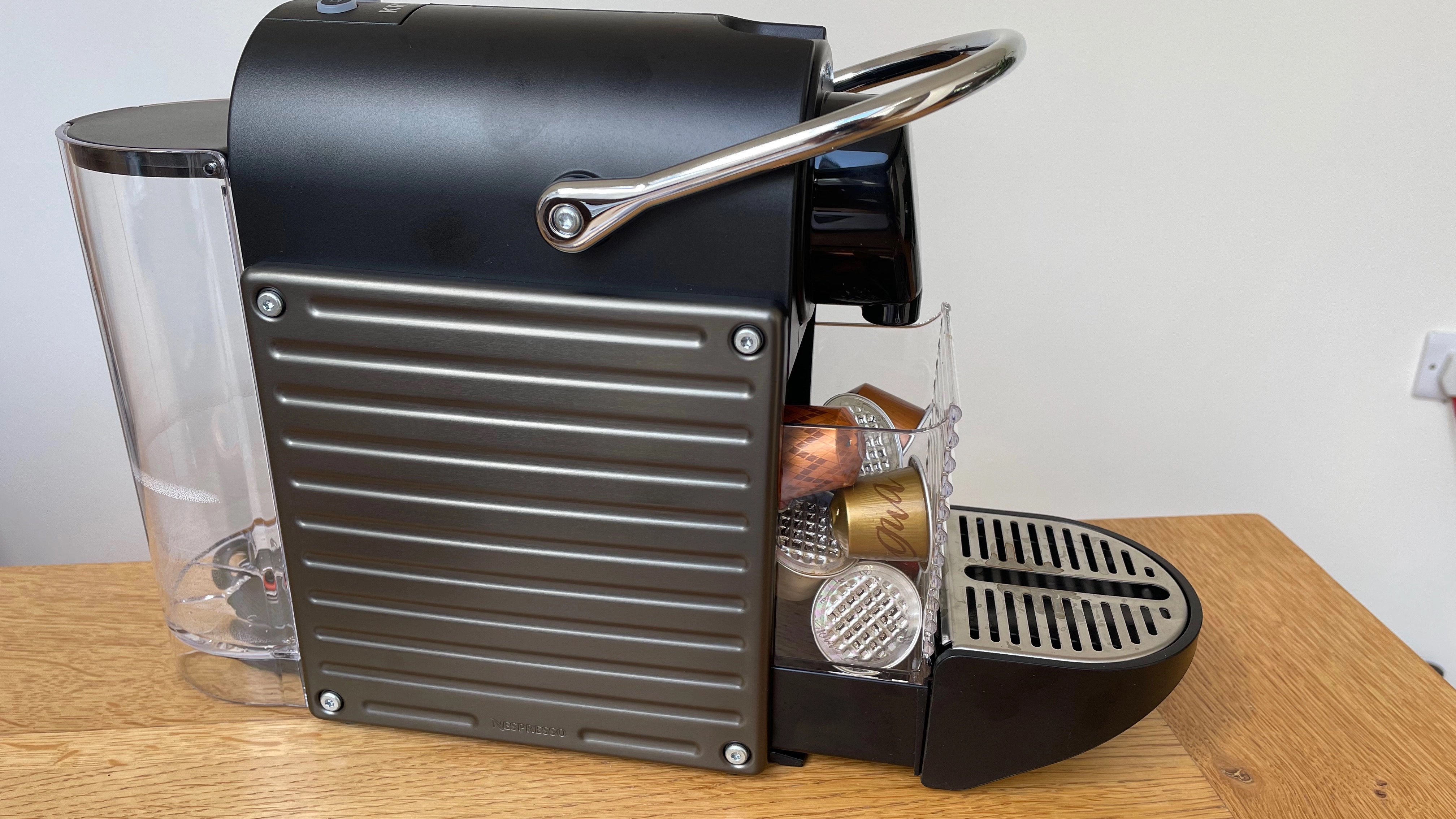

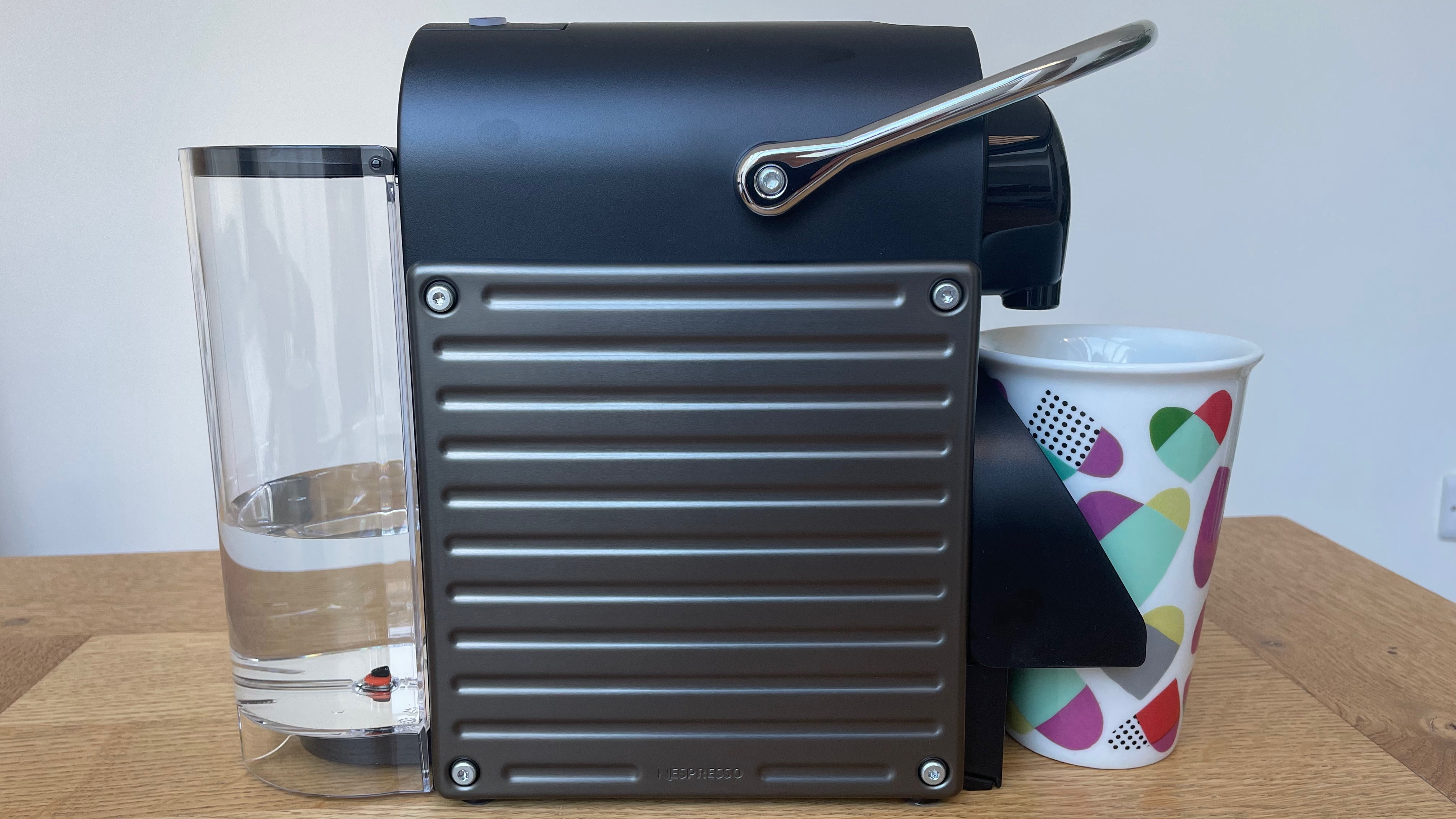
Specifications
Reasons to buy
Reasons to avoid
✅ You're on a budget: This is one of the most affordable Nespresso machines around right now.
✅ You don't have much space: As its name suggests, the Pixie is a particularly compact Nespresso coffee maker.
❌ You want to use Nespresso Vertuo capsules: The Pixie only takes Nespresso Original pods. If you want to use Vertuo capsules, try the Nespresso Vertuo Pop instead.
❌ You want to make milky drinks: You'll need a separate milk frother like the Nespresso Aeroccino for this.
Krups is a brand best known for its manual espresso machines and brewing equipment (I have one of its grinders, and swear by it), but with the Pixie, it's put that expertise to use in the world of coffee capsules. The results have to be tasted to be believed. During our tests, not only did the Pixie heat up incredibly quickly, reaching temperature in just 25-30 seconds, the resulting brew was the best we've tried from any Nespresso machine, with thick, robust crema.
The Pixie can only brew two sizes of drinks (espresso or lungo), but it's otherwise hard to fault. It has a reassuringly sturdy build, and pulling down the front handle to dispense your coffee gives just a little taste of the barista experience without any of the skill or mess usually involved. Clean-up is a piece of cake too - just press the 'lungo' button three times when you want to rinse the system through.
The Krups Nespresso Pixie can be bought on its own if you like your coffee black, or with a standalone milk frother for just a little extra cash. All in all, it's a beautifully designed little machine that takes up barely any space on your kitchen counter, and delivers genuinely impressive results in less than two minutes.
Read our full Nespresso Pixie by Krups review
The best coffee maker for cold-brew
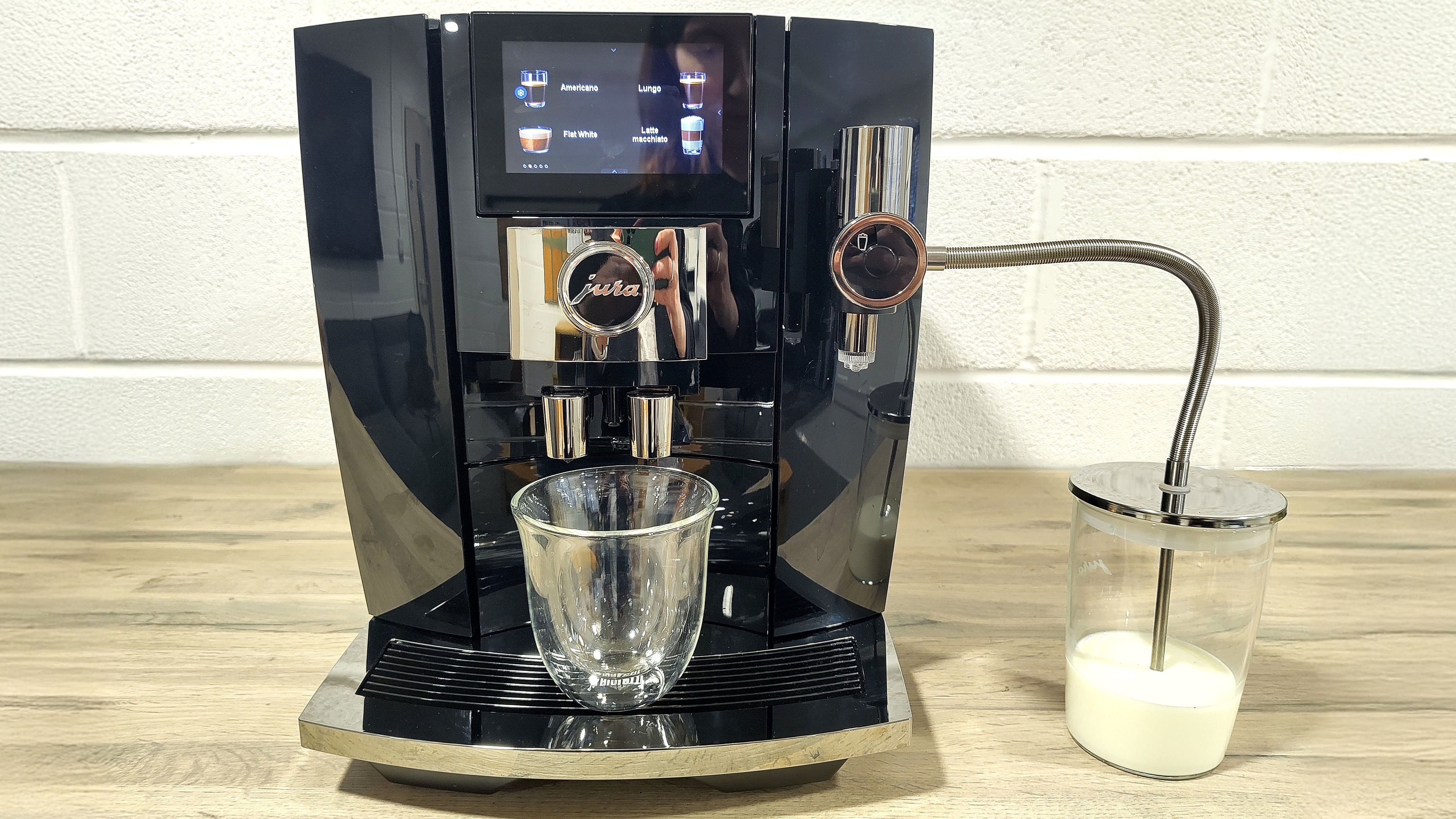
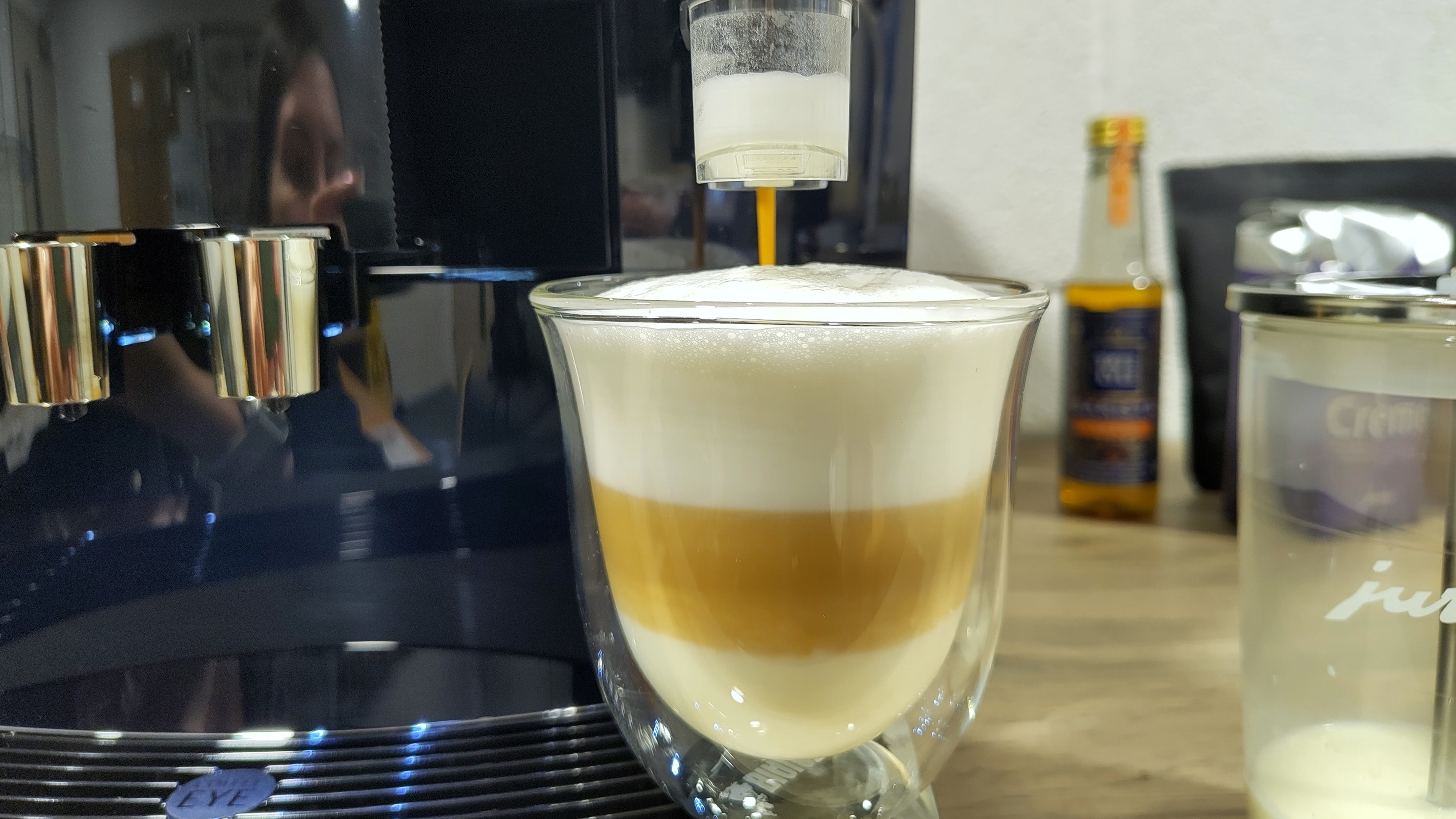
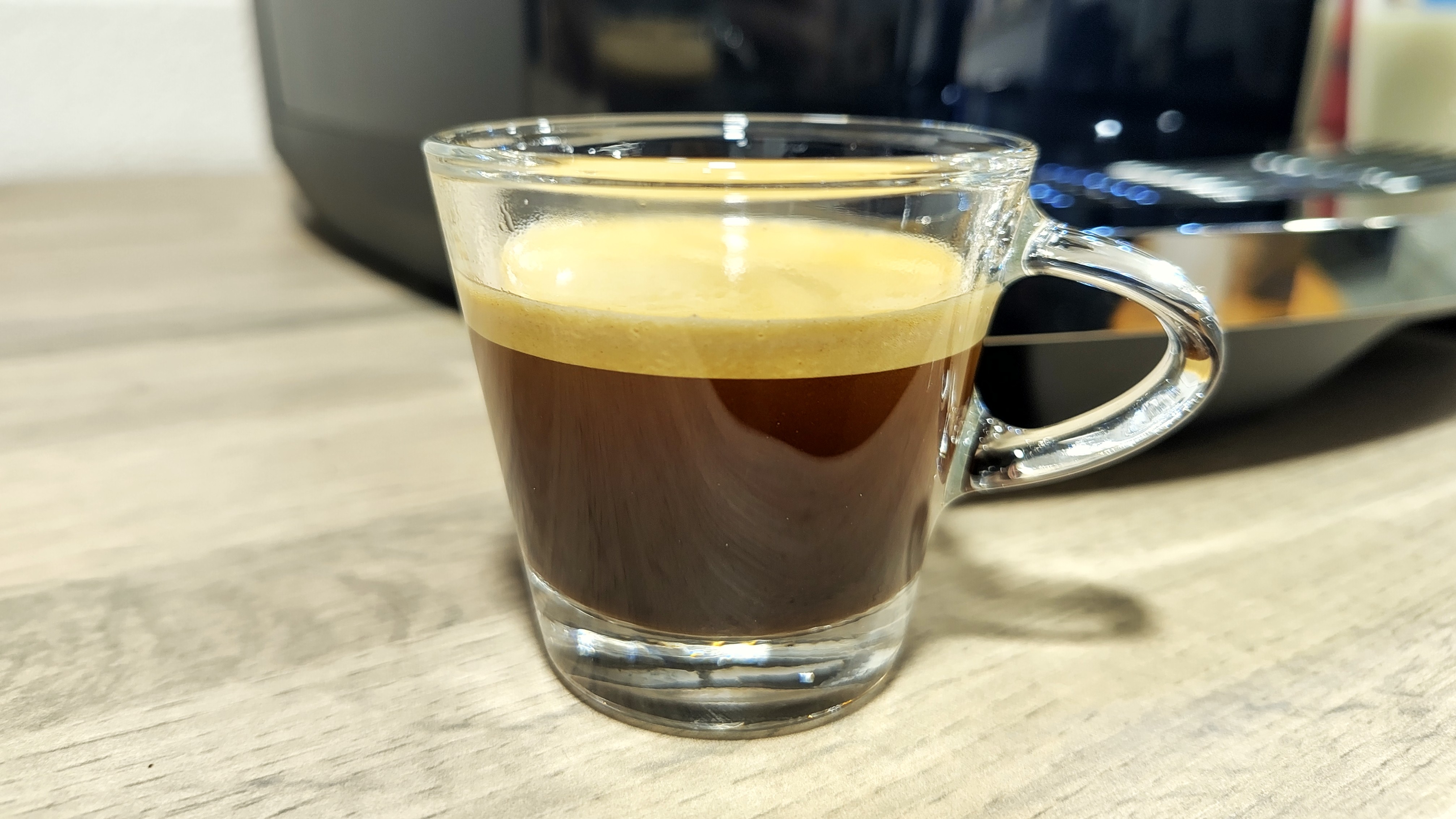
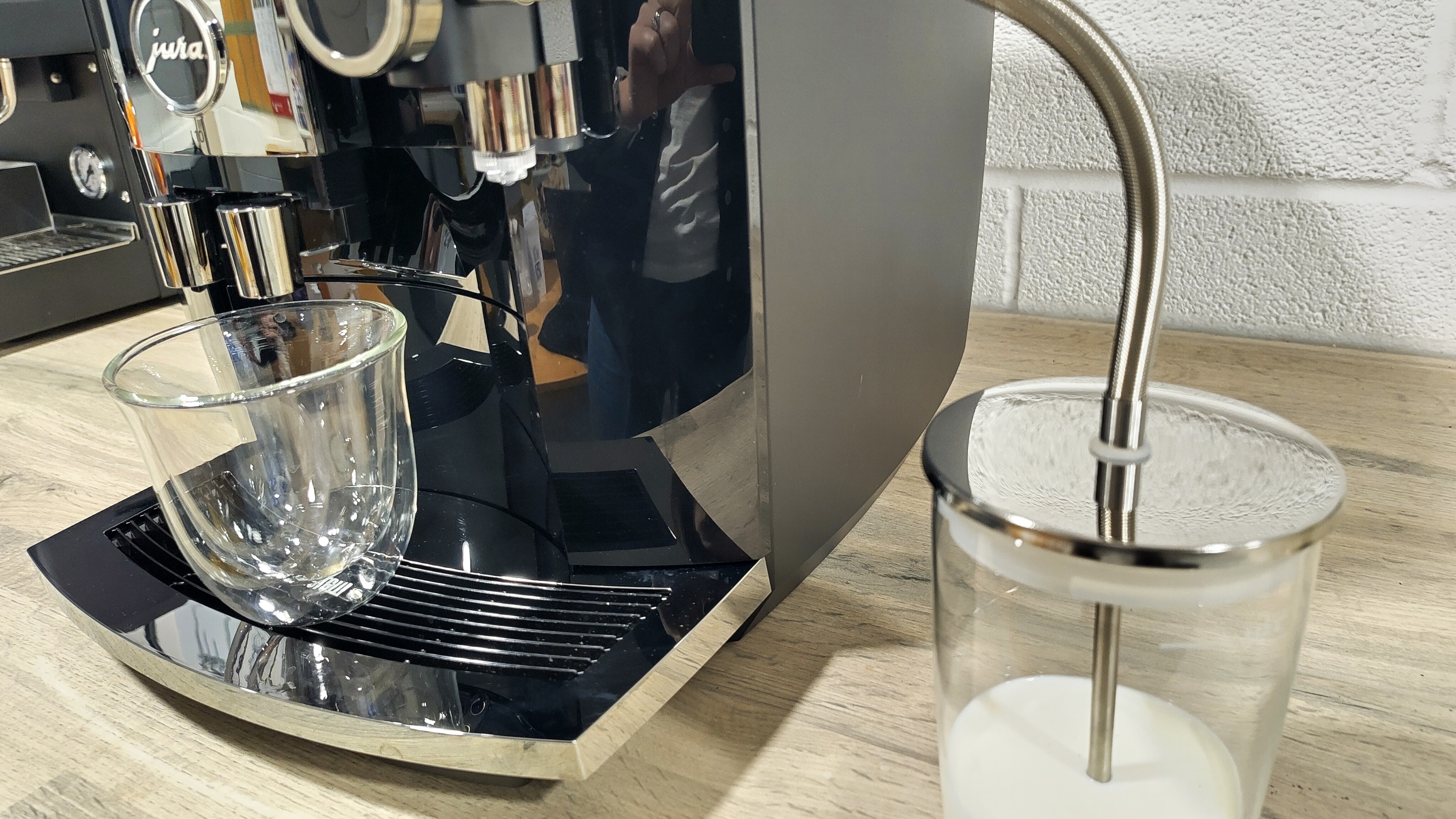
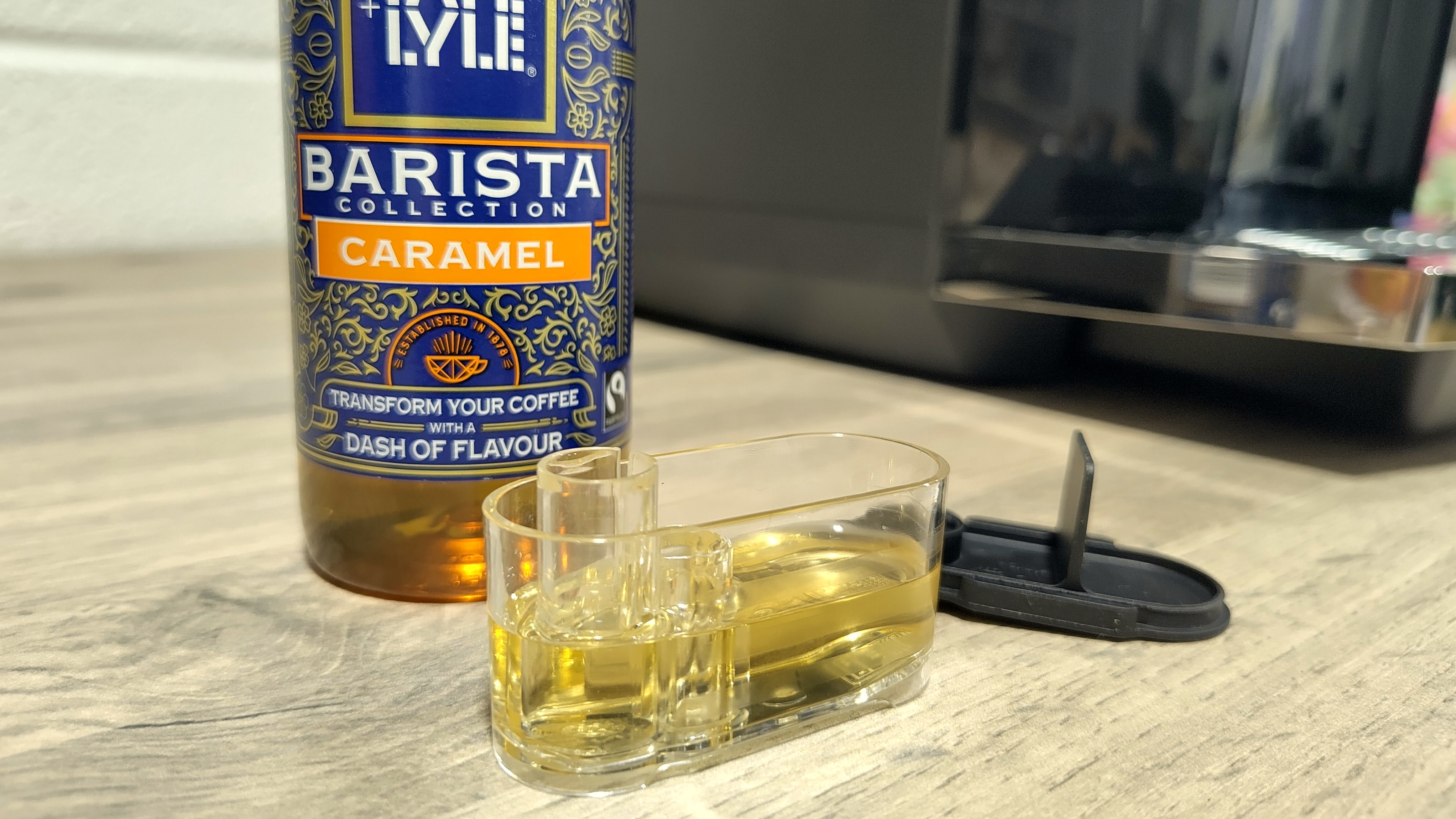
Specifications
Reasons to buy
Reasons to avoid
✅ You like decadent coffee drinks: The Jura J10 lets you replicate even complicated coffee orders at home.
✅ You enjoy cold brew: The J10's updated cold brewing system produces a flavor profile strikingly similar to coffee brewed cold overnight.
❌ You prefer traditional coffees: If syrup and cold brew aren't your thing, you can get excellent results from a more affordable machine such as the standard Siemens EQ900.
❌ You're a bit clumsy: The wide and shallow drip tray can be prone to spilling if you're not careful, and the J10 won't warn you until it's very full.
Does your usual coffee shop order bring baristas out in a cold sweat? The Jura J10 is the coffee maker for you. Not only does it brew superb espresso, it also creates the most authentic-tasting cold brew I've had from a home coffee machine.
Unlike most other machines capable of brewing cold, the Jura J10 forces pulses of water over your freshly ground coffee at high pressure (as shown in the video below). The result is impressive, and noticeably more flavorsome than cold brew from other machines I've tested - mellow and well-rounded. Toss in a couple of ice cubes and you'd be hard-pressed to tell the difference between the J10's cold brew and coffee made the traditional way overnight.
The Jura J10 also has a particularly good milk-texturizing system, with an option to add a syrup of your choice, which is distributed evenly throughout the foam as it's dispensed. Because the syrup isn't concentrated in the bottom of your cup, you only need a little to achieve plenty of flavor, and the syrup never enters the coffee machine itself so you don't need to worry about it tainting your next drink.
It's all very impressive and well executed, though the price tag means it's definitely a luxury buy.
Read our full Jura J10 review
The best small coffee maker
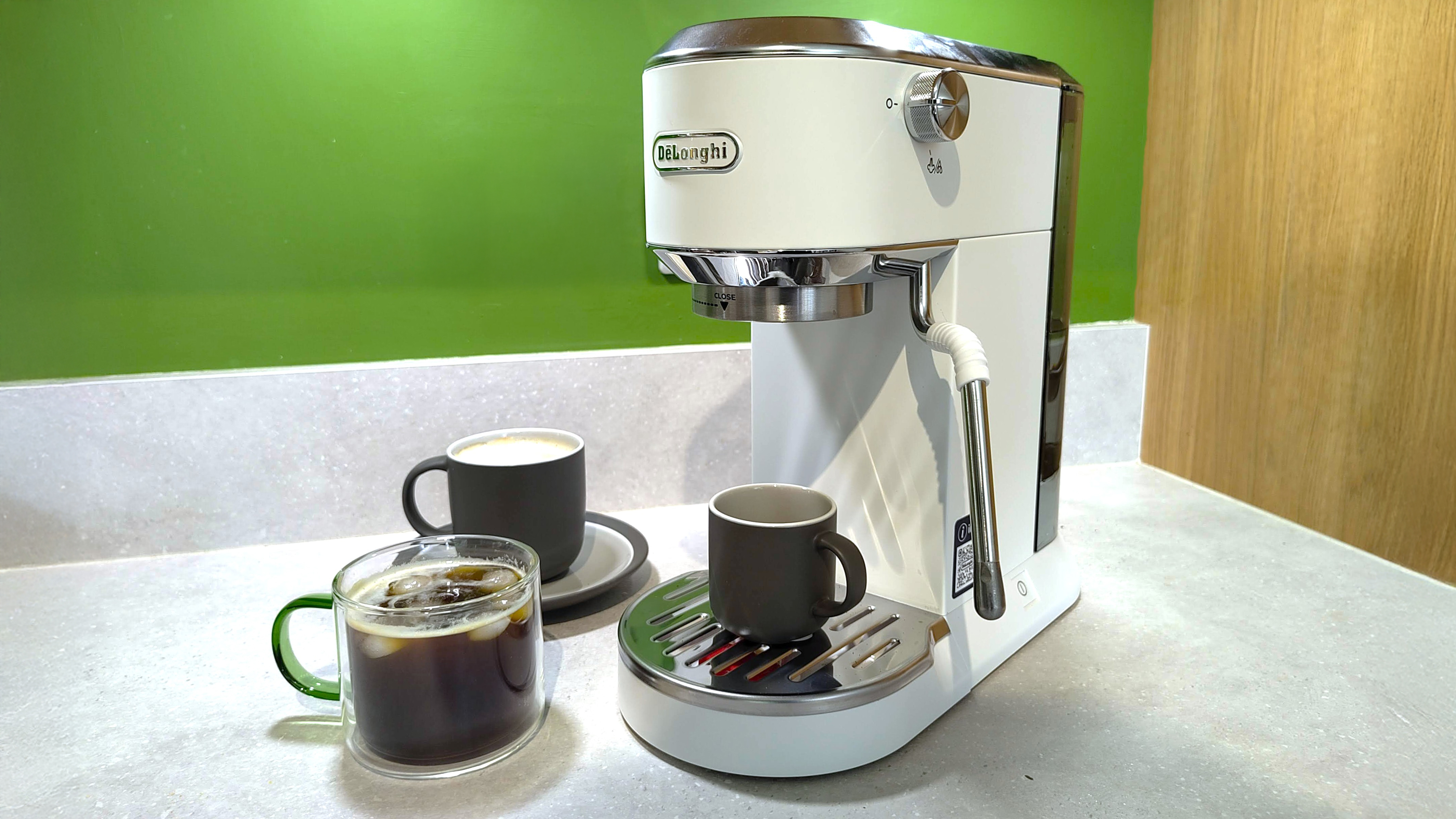
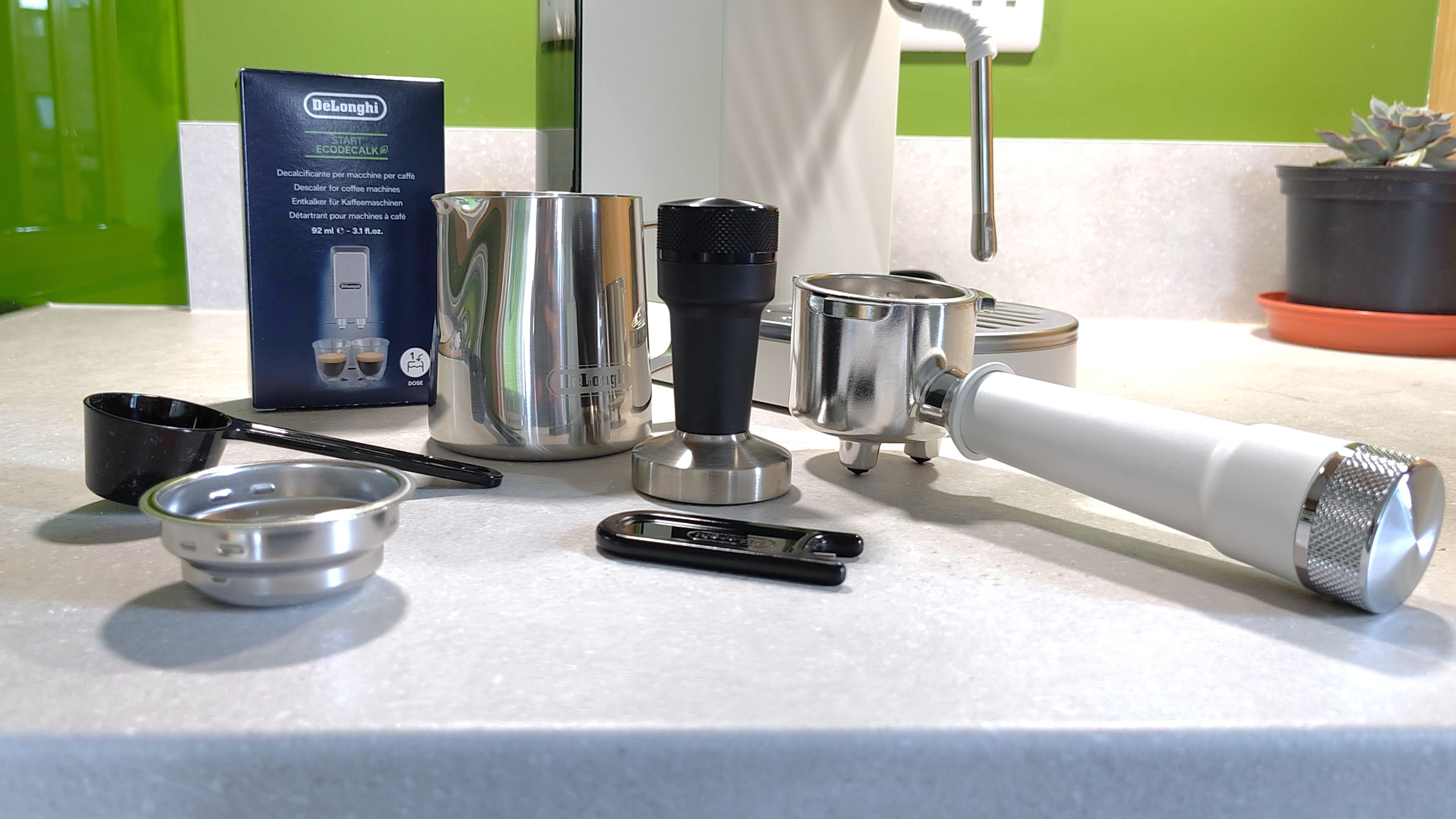
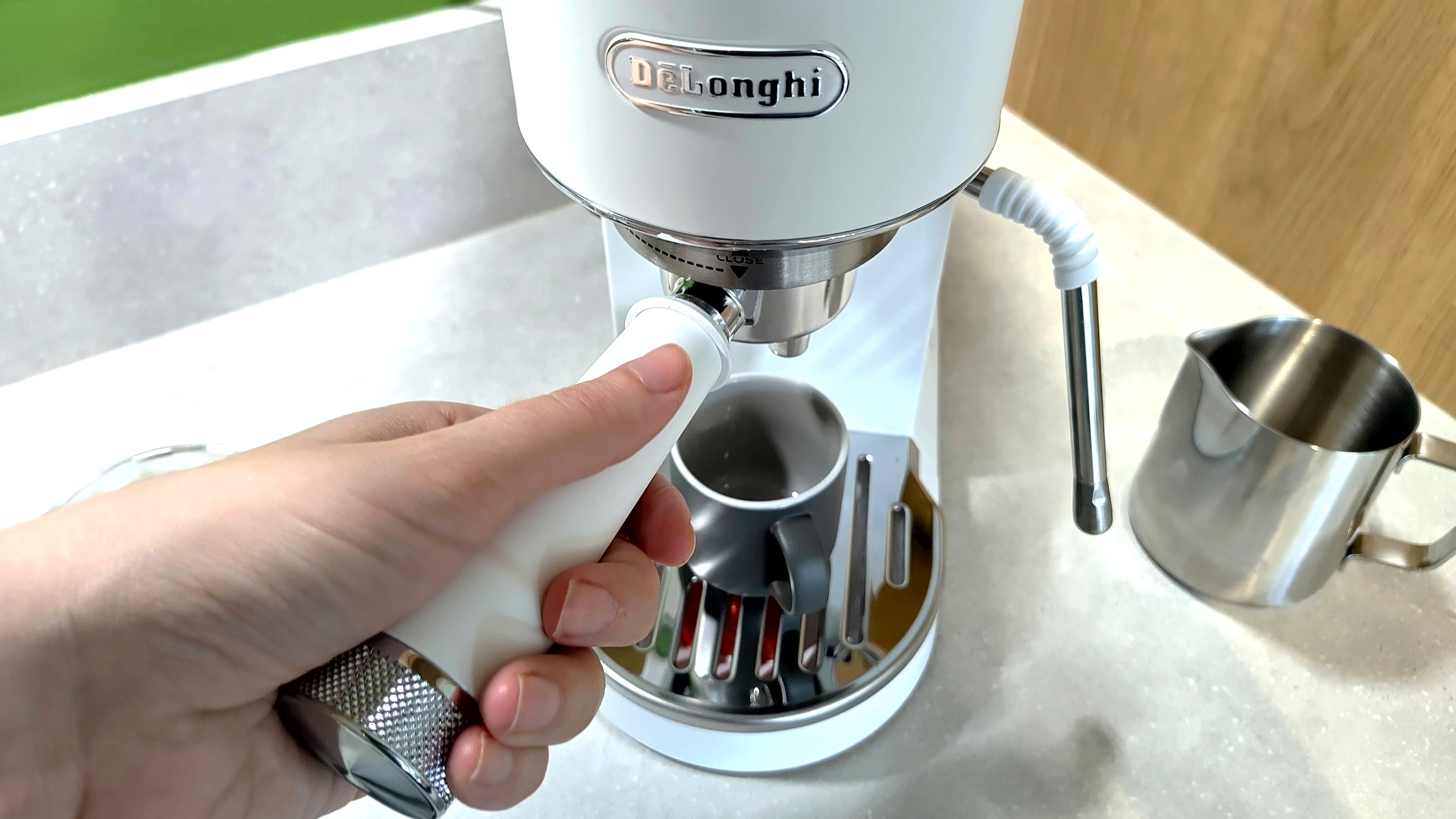
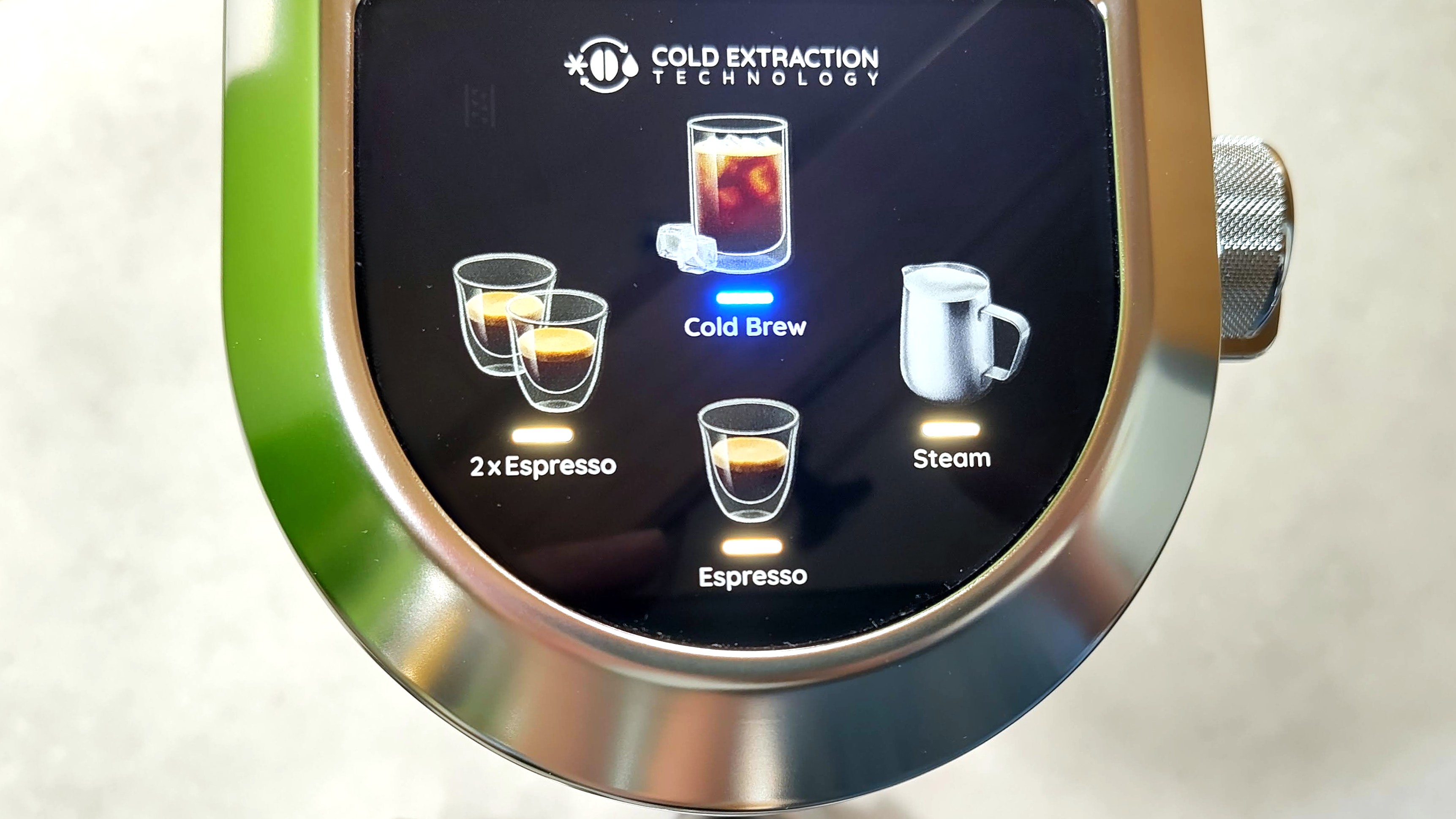

8. De'Longhi Dedica Duo
Our expert review:
Specifications
Reasons to buy
Reasons to avoid
✅ You have a small kitchen: The Dedica Duo is one of the most compact espresso machines we've ever tested at TechRadar.
✅ You enjoy cappuccinos and lattes: Unusually for a machine this size, the Dedica Style has a manual steam wand.
❌ You want to use single-walled baskets: Swapping the pressurized baskets that come with the Dedica Duo is quite simple, but the machine doesn't come with single-walled baskets.
❌ You want an integrated grinder: You'll need to buy one separately, or settle for using pre-ground coffee.
The De'Longhi Dedica Duo is my pick for the best small coffee machine around right now, and it's one of the most affordable too, with a list price of just $299.95 / £279.99 (details for Australia are yet to be announced).
It's a successor to the excellent De'Longhi Dedica Style, and retains all the features that made that machine so successful, including a fast-heating boiler, consistent boiler pressure, and a solid build that you might not expect from a coffee machines at such an affordable price.
It measures a mere 12 x 5.9 x 13 inches / 30.4 x 14.9 x 33cm, meaning you can tuck it into even a tiny kitchen (I currently have it between my toaster and the wall), and the Duo has a more modern-looking design with cleaner lines and a wider drip tray to more easily accommodate two espresso cups at once. It also comes in a more contemporary range of colors, including pistachio, rose, and vanilla shades inspired by gelato (according to De'Longhi).
It performed consistently well during my tests, proving much more reliable than similarly-priced coffee makers from the likes of Casabrews. My only criticism is that it has a tendency to drip a little after the pump has stopped, but I certainly don't think that should be a deal-breaker.
Read our De'Longhi Dedica Duo hands-on
The best coffee maker for plant milk
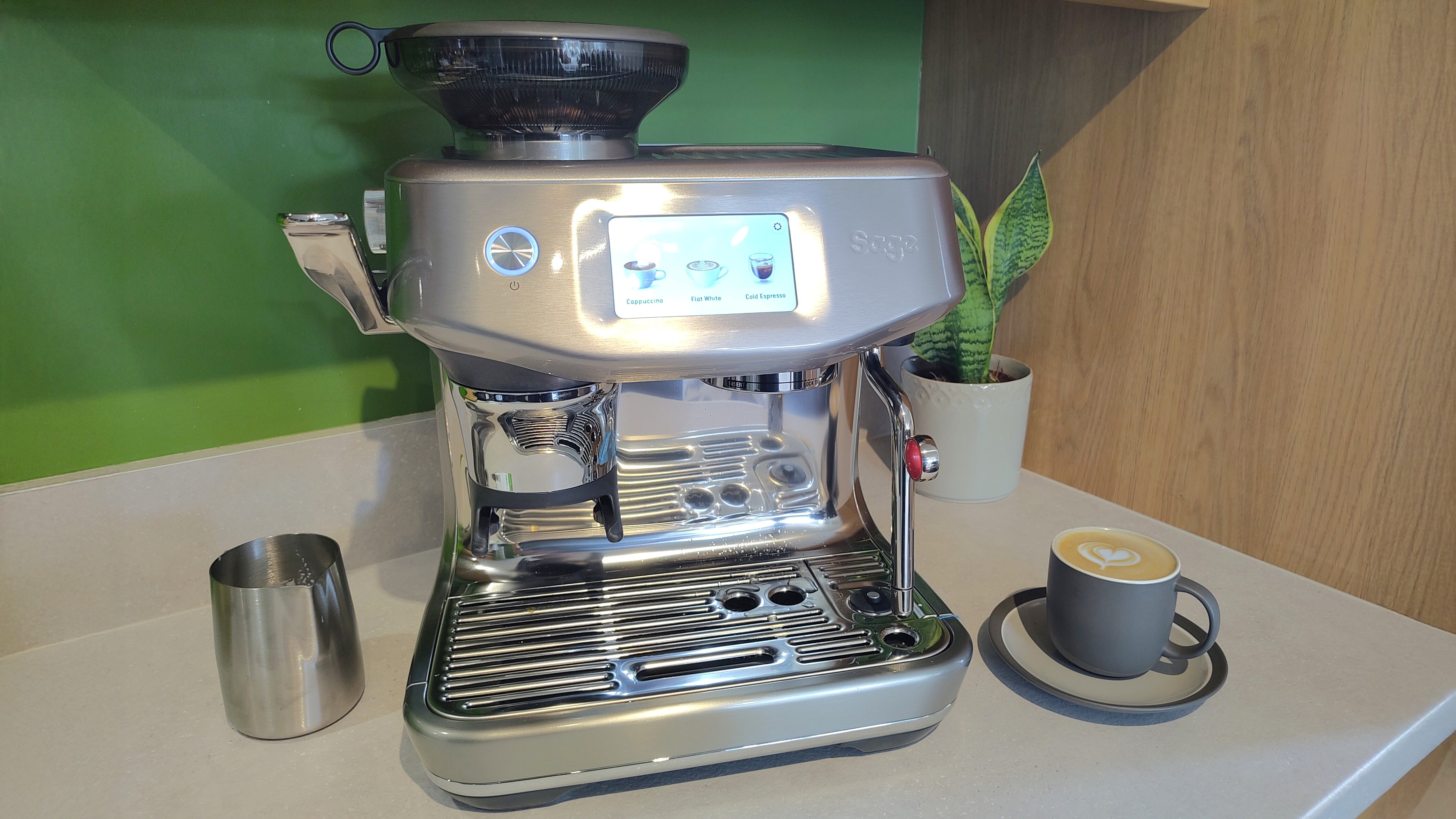
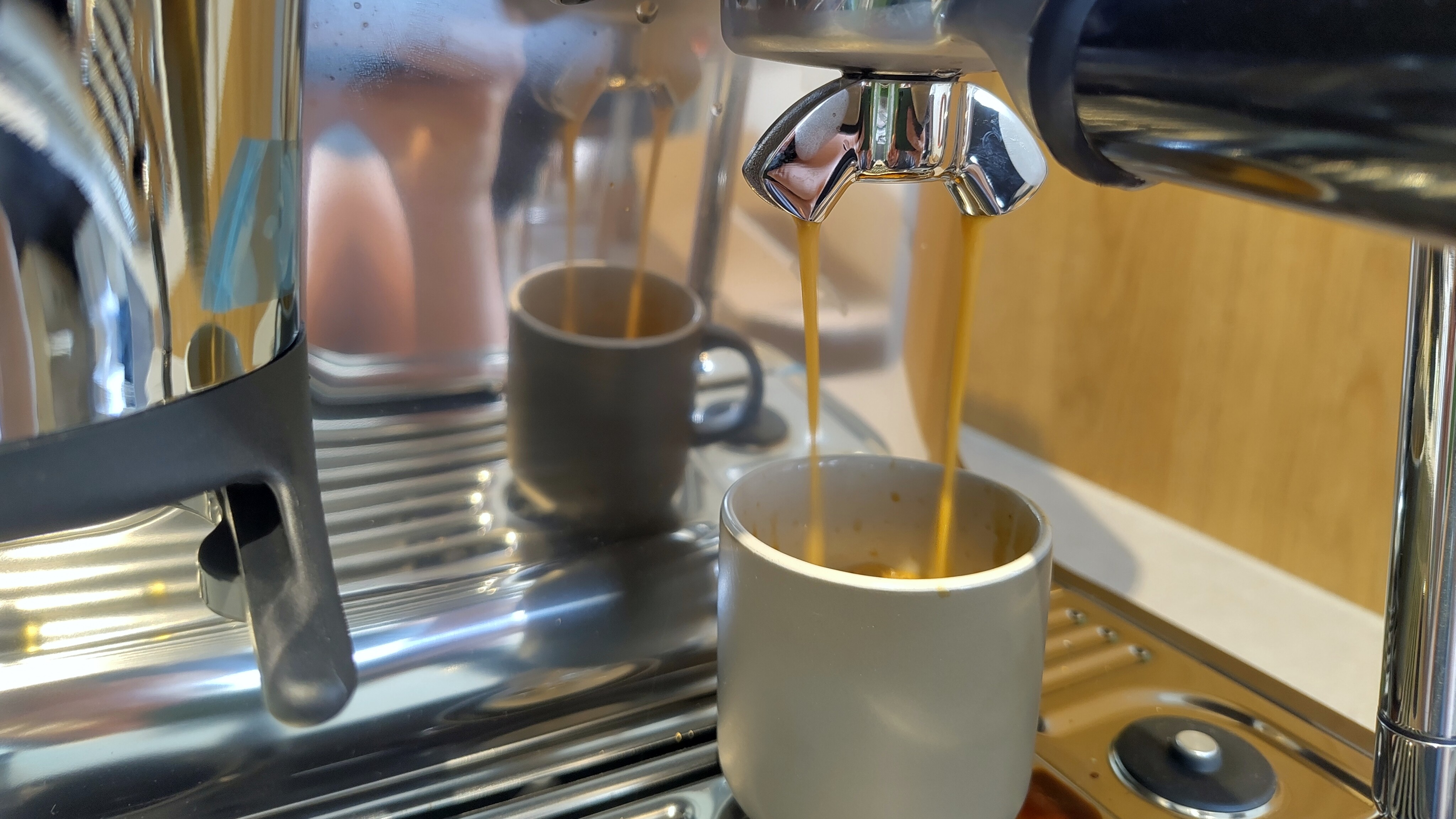
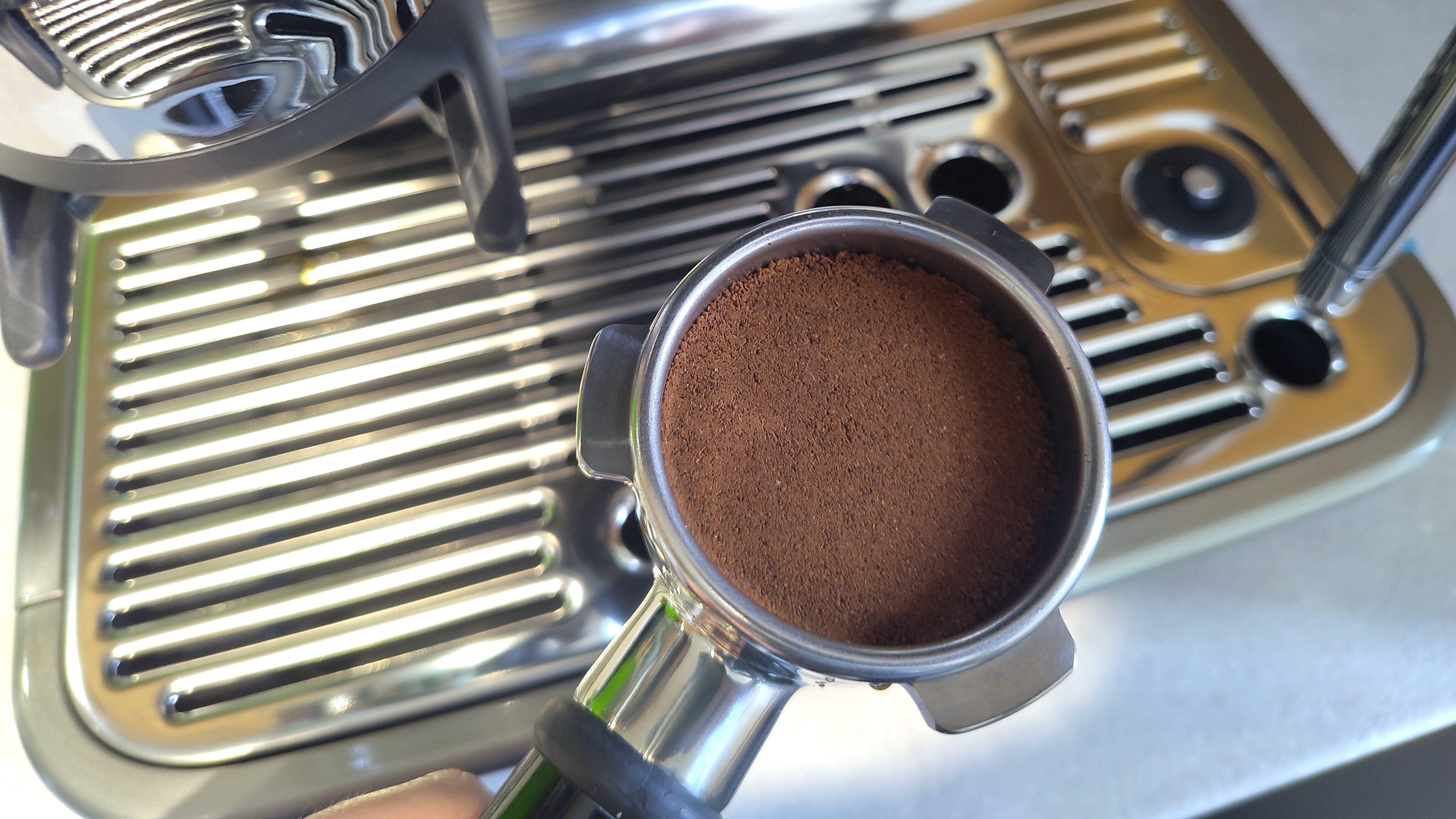
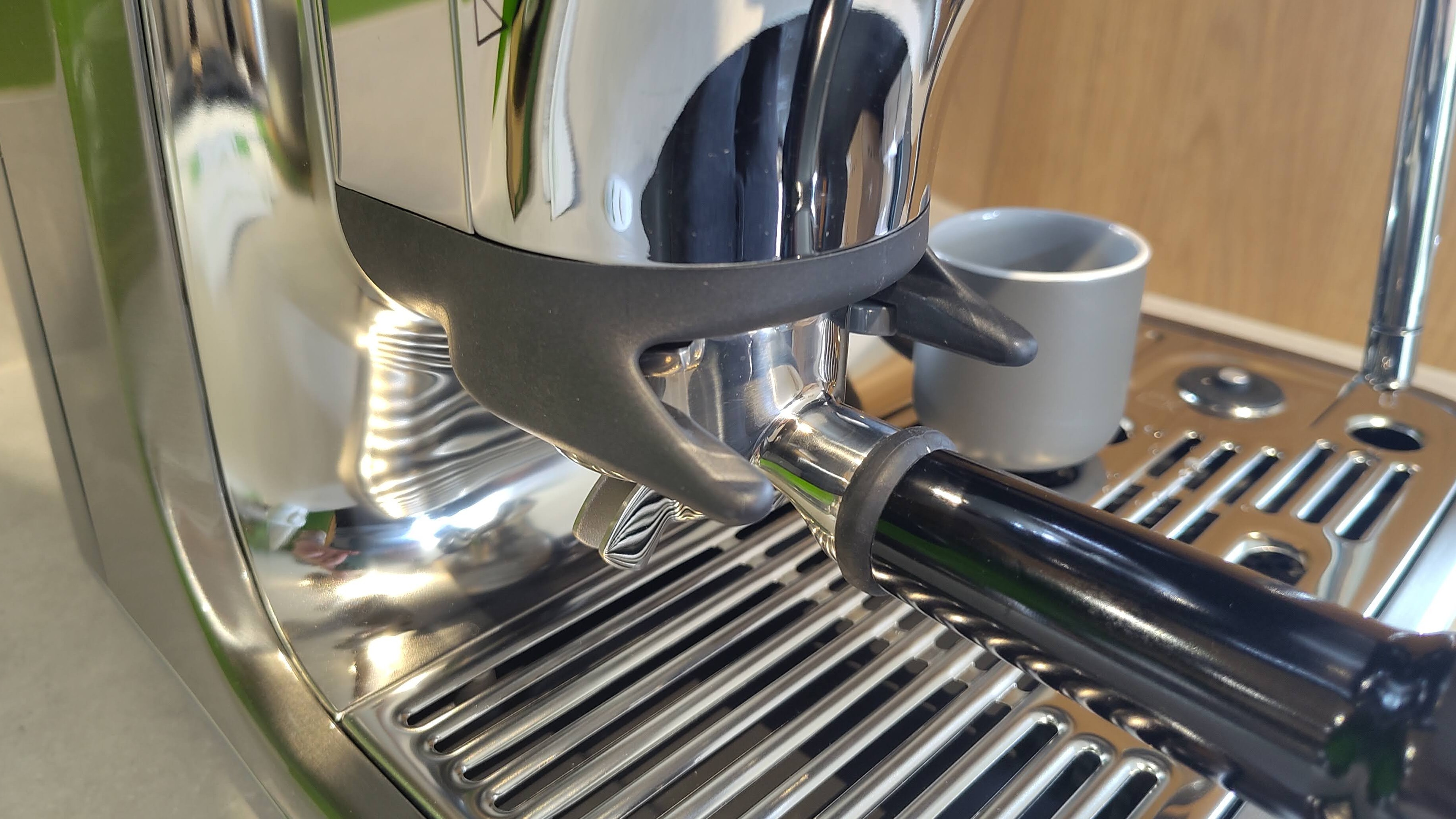
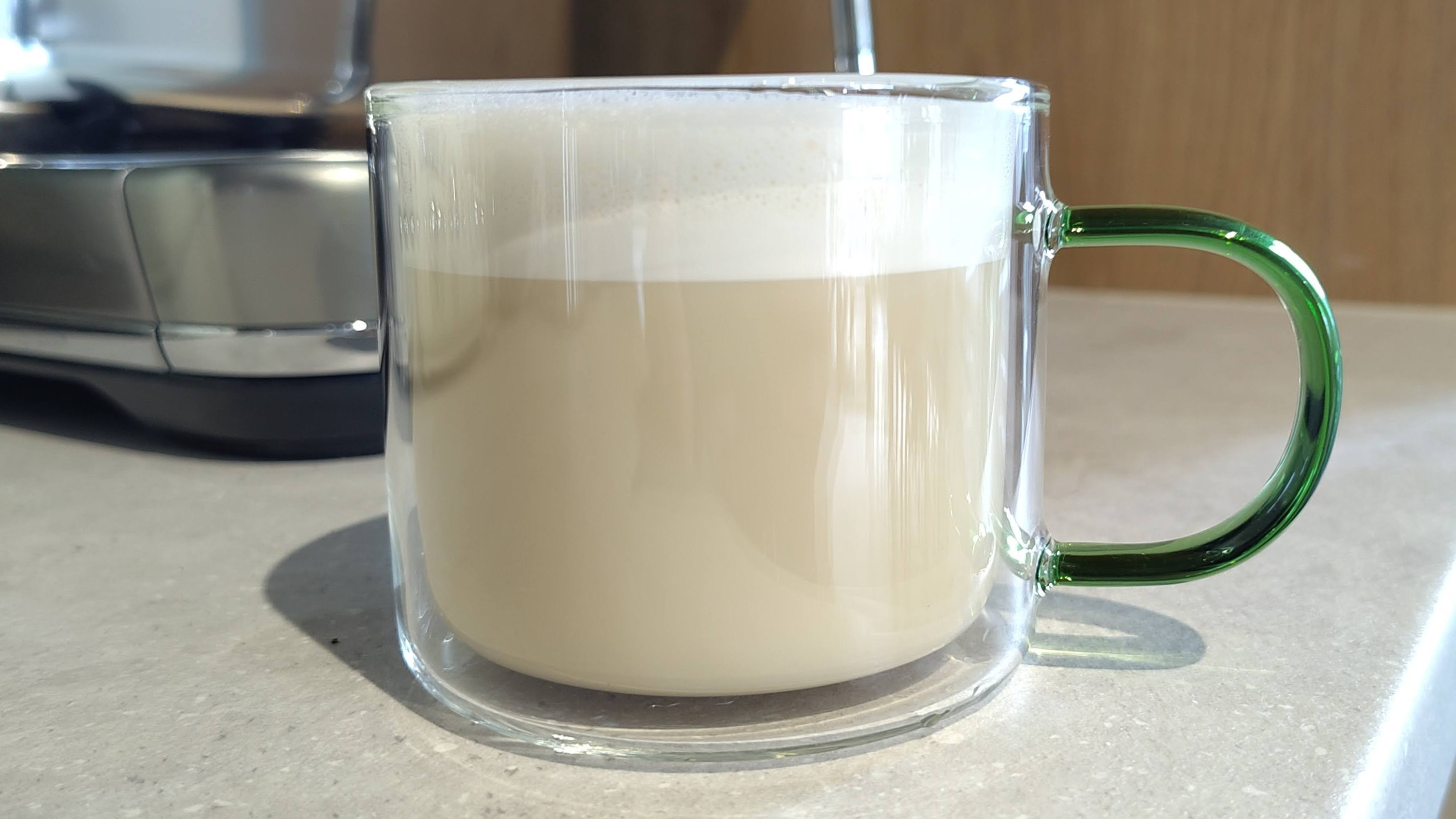
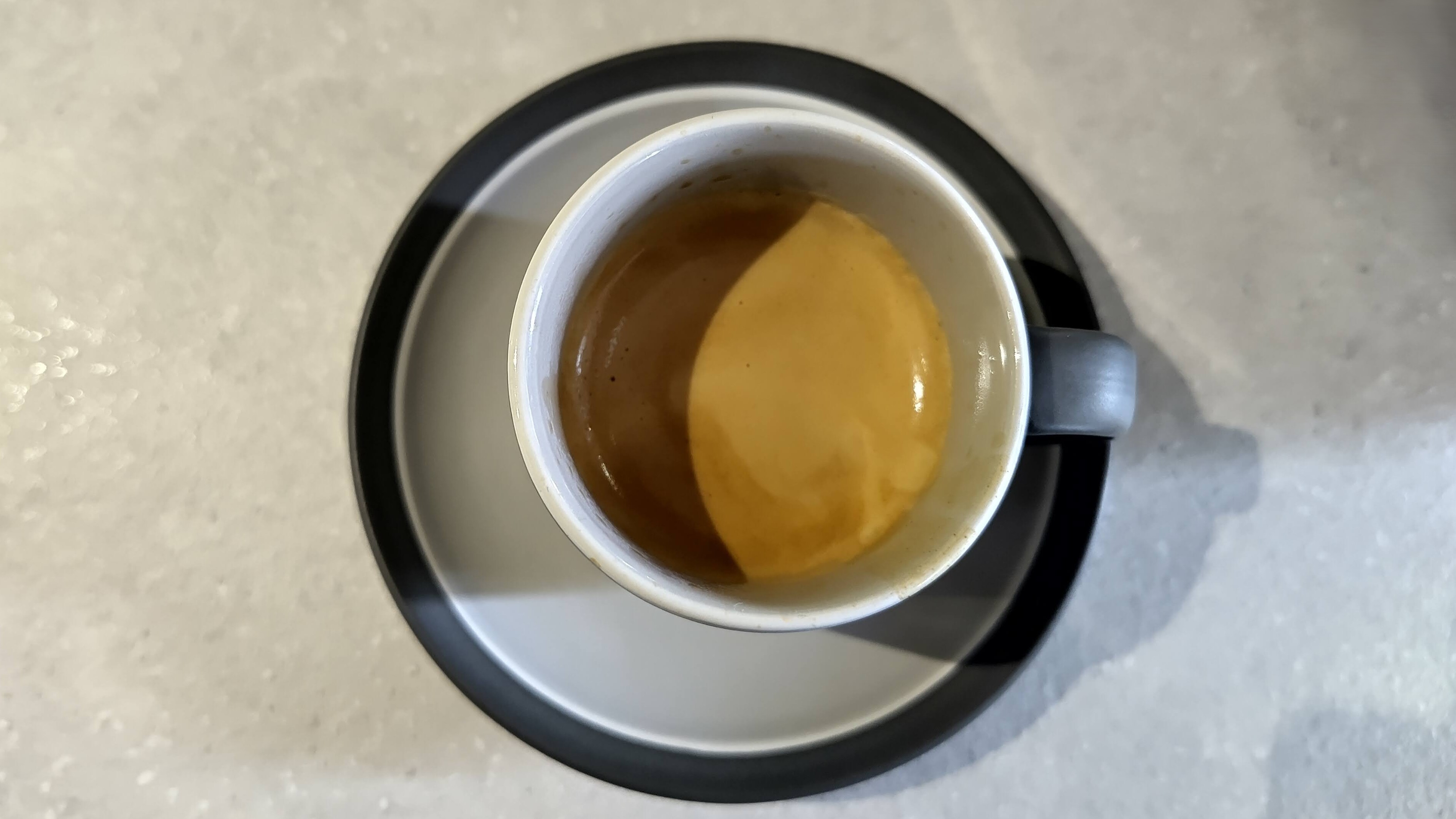
9. Sage Barista Touch Impress with Cold Extraction
Specifications
✅ You want optimum flavor from your beans: This machine guides you through the process of dosing coffee and choosing the ideal grind size for a perfectly extracted shot. It might take a while to get it just right, but it’s worth the time,
✅ You want tasty cold brew without the wait: The latest version of the Barista Touch Impress does a good job replicating the smooth taste of traditionally-made cold brew.
❌ You only use dairy milk: The AutoMilq system works best with plant-based milk, though steaming dairy milk manually is fine.
❌ You have small kitchen counters: This machine is quite bulky, and you need to be able to access the back to refill the water tank.
You can prepare any kind of milk with a manual steam wand, but automatic steaming systems on coffee machines are usually optimized for full-fat dairy. If you try to texturize oat or soy milk on auto mode, you will often be left with a drink that's hot, but flat. That's not the case with the Sage Barista Touch Impress with Cold Extraction, which works even better with plant-based milk than dairy.
It's also a great coffee maker if you want to learn how to make espresso manually, guiding you through each step of the process and helping you understand the effect of every decision along the way. Want to know the effect of increasing the grind size? Taste the resulting espresso and find out. Curious about brew temperature? Try tinkering and see what happens.
This machine also has a supremely satisfying lever-operated tamper. After you've ground your beans straight into the filter basket, pull down the arm on the left-hand side of the machine twice to compress it into a perfect puck. The machine can even adjust the amount of coffee it grinds (the dose) depending on your chosen beans and grind size.
Cold extraction works well too, producing a mellow and well-rounded espresso that's much better than one brewed hot and then watered down with ice.
Read our full Sage Barista Touch Impress with Cold Extraction review
We also tested
We test new coffee machines every month here at TechRadar. Here are some we've reviewed recently that didn't quite make our shortlist.
Fellow Aiden Precision Coffee Maker
This smart drip coffee machine gives you two brewing options: a standard mode that works like a standard filter machine, and a smart mode that brews precisely the amount of coffee you request to your specifications, adjusting the brew time, temperature and water flow automatically. It's an excellent machine, but let down by a carafe that just doesn't keep you drink hot long enough.
Read our full Fellow Aiden Precision Coffee Maker review
Philips 5400 LatteGo
The LatteGo is an ideal coffee maker for beginners who want to enjoy experimenting with different custom drinks. Its color touchscreen lets you easily tweak beverages, and its auto milk frother means there's no manual skill necessary. It's noisy though, and you have to position your cup perfectly or the milk will miss its target.
Read our full Philips 5400 LatteGo review
De'Longhi Eletta Explore
Another fully automatic bean-to-cup coffee maker, the Eletta Explore is extremely versatile, capable of brewing delicious hot and cold coffee quickly and easily. We didn't love all aspects of its design though, including its separate carafes for hot and cold milk drinks, its somewhat fiddly water tank, and a bean hopper that's not airtight.
Read our full De'Longhi Eletta Explore review
Instant Infusion Brew 12-Cup Coffee Maker
The joy of drip coffee is its simplicity, and this basic brewer from the maker of the Instant Pot doesn't mess around with unnecessary bells and whistles. It only misses out on a spot in our shortlist due to its rather plain design; the KitchenAid drip machine does the same thing but looks better doing it.
Read our full Instant Infusion Brew 12-Cup Coffee Maker review
How to choose the best coffee maker for you
There are so many different options on the market that it can be hard to know which is the best coffee maker for you.
If you enjoy a simple americano and don’t like milk-based drinks, then a drip filter coffee maker will be a great option. Plus, these machines can make as many as 12 cups of coffee in one go.
If you just want small quantities of coffee, though, we’d recommend a single-serve coffee maker from Keurig or Nespresso.
If you like milk-based coffee, then there are quite a few options available. Some models are fully automated and have a built-in frother that will be able to create a variety of milk textures, while others have steam arms which you place into a jug of milk and froth the milk yourself. There’s a third option too - and this includes buying a separate milk frother which is a stand-alone machine. You’ll be able to use these to make everything from lattes to hot chocolates, and they make a great accompaniment to a pod coffee maker.
Coffee drinkers that like plenty of customization options will be best suited to a coffee maker that lets you adjust the strength of your brew and create different sizes of hot drinks. Many premium coffee makers will let you do both of these things, but you can also adjust the strength and the aroma of your coffee with a good drip filter model.
The final thing to consider is how involved you’d like to be in the coffee-making process – and the clean-up afterwards. Some designs are smart-enabled so you can simply switch them on from your phone, however, others will require you to pack down ground coffee and pull your own shot of espresso before frothing the milk yourself. Some of the best coffee machines have self-cleaning systems which purge the steam wand to prevent milk residue drying in the pipes, while others have systems to flush out any build-up in the machine.
If you’re still not sure, you can find a more detailed breakdown in our article covering which type of coffee maker to buy.
Frequently asked coffee maker questions
Can espresso machines make regular coffee?
Technically yes, because espresso is the base of all kinds of coffees. Espresso machines can be used to make an americano if they have the functionality to add hot water to a shot of espresso (which many of the best coffee machines do). If you want to make milk-based drinks such as lattes or flat whites you’ll need to ensure that there’s a steam arm on the machine, or alternatively, you can purchase a separate milk frother.
How do coffee makers work?
With so many different types of coffee makers on offer, it’s no surprise that each type of machine works slightly differently. Here we focus on espresso machines and pod coffee makers but for a more detailed explanation, head to our feature on how coffee makers work.
Espresso machines work by using a pump to push pressurized water through coffee grounds so that it infuses with the water to make a smooth shot of espresso. If an espresso machine has a milk frother, it will use a boiler to push steam out of the machine which is then used to give the milk a velvety texture. Pod coffee makers work by using a compacted capsule of coffee and piercing a hole in the capsule. Hot water is then powered up through the machine and pushed through the capsule to create a coffee. Some more advanced pod machines, such as the Nespresso Vertuo Next, spin the coffee pod around at high speeds so that the contents evenly infuse with water for an even smoother cup of coffee.
How to clean a coffee maker
Keeping your coffee maker clean will not only ensure it looks great, but it’s crucial for maintaining working order and keeping it hygienic. We’ve written a full feature on how to clean a coffee maker and all its parts but the good news is that you’ll be able to clean thoroughly using products you’ve most likely got at home already. To clean your machine’s water tank, you can make a solution with one part water and one part white vinegar and simply leave it to soak inside your water reservoir for a couple of hours. To give the pipes a good flush through, let the vinegar solution run through the machine by switching it on as you would do normally for water.
We're also got a dedicated article on how to clean a Nespresso machine and how to clean a Keurig, for those that have single-serve coffee makers at home.
What is the best coffee maker for home use?
If you're looking for the best coffee maker to use at home, either because you're spending more time working remotely and want a cup of Joe that's the same quality as you'd get in the office, or you just want to cut down on your expenses by reducing your coffee shop visits, then you're probably wondering which is the best one to buy.
For true coffee-shop-worthy espresso, then it's worth investing in one of the best espresso machines on the market right now. These ensure you can tweak the strength of the coffee by changing aspects such as the volume of water used to brew the espresso, the length of time the brewing process takes, and how tightly or loosely compacted the puck (the disc of ground coffee) is.
All of these affect how strong, and how bitter the coffee tastes. But espresso machines require plenty of experimentation, which takes time and using ground coffee can be messy.
If you're tight on space consider the Breville Bambino or Breville Bambino Plus (which are sold under the Sage brand in the UK), while for those with larger kitchens and a bigger budget, consider the De’Longhi La Specialista Arte EC9155MB or the Breville Oracle Touch - again known as the Sage Oracle Touch in the UK.
If you don't want to spend all your time learning how to brew the perfect coffee, or cleaning up after it, then one of the best single-serve coffee makers, also known as pod coffee machines, will produce good quality espresso with minimal mess. We rate the Nespresso Vertuo Next, but our article which Nespresso machine is best? offers plenty of further information to help you decide.
If you're in the US there's also an array of Keurig single-serve coffee makers to choose from. Check out Nespresso vs Keurig: which should you buy? if you're unsure which manufacturer you should plump for.
Which type of coffee maker should I choose?
For those that want to perfect their coffee-making skills, consider an espresso machine. This is the best coffee maker for people who prefer to handle every part of the brewing process, from compacting the coffee grounds into a puck or small disc (a process known as tamping) to the brew volume and duration to create the perfect cup of coffee to suit you. If you’re new to this type of coffee maker, discover how to use an espresso machine in-depth in our article.
Alternatively, for the same coffee-shop standard hot drinks but with a hands-off approach, opt for a bean-to-cup coffee machines, which automate the processes described above to rustle up a cup of joe at the touch of a button.
If you’re looking to make a cup of coffee with as minimal amount of fuss as possible, a single-serve coffee maker is the best fit. Also known as pod coffee machines, they use capsules filled with ground coffee to create a hot drink with far less mess than espresso machines.
Nespresso and Keurig are the biggest brands when it comes to single-serve coffee machines and offer a range of machines each. However, pod coffee machines have a poor reputation when it comes to sustainability as many of the capsules end up in landfill. Follow our guide on how to recycle Nespresso pods to help ensure this doesn’t happen.
Finally, the drip coffee maker is a familiar style to most of us and it's the best coffee machine for those that want to brew large quantities of Java at any one time. Discover in-depth how coffee makers work in our article then, find out how to make your favorite coffee at home
How we test the best coffee makers
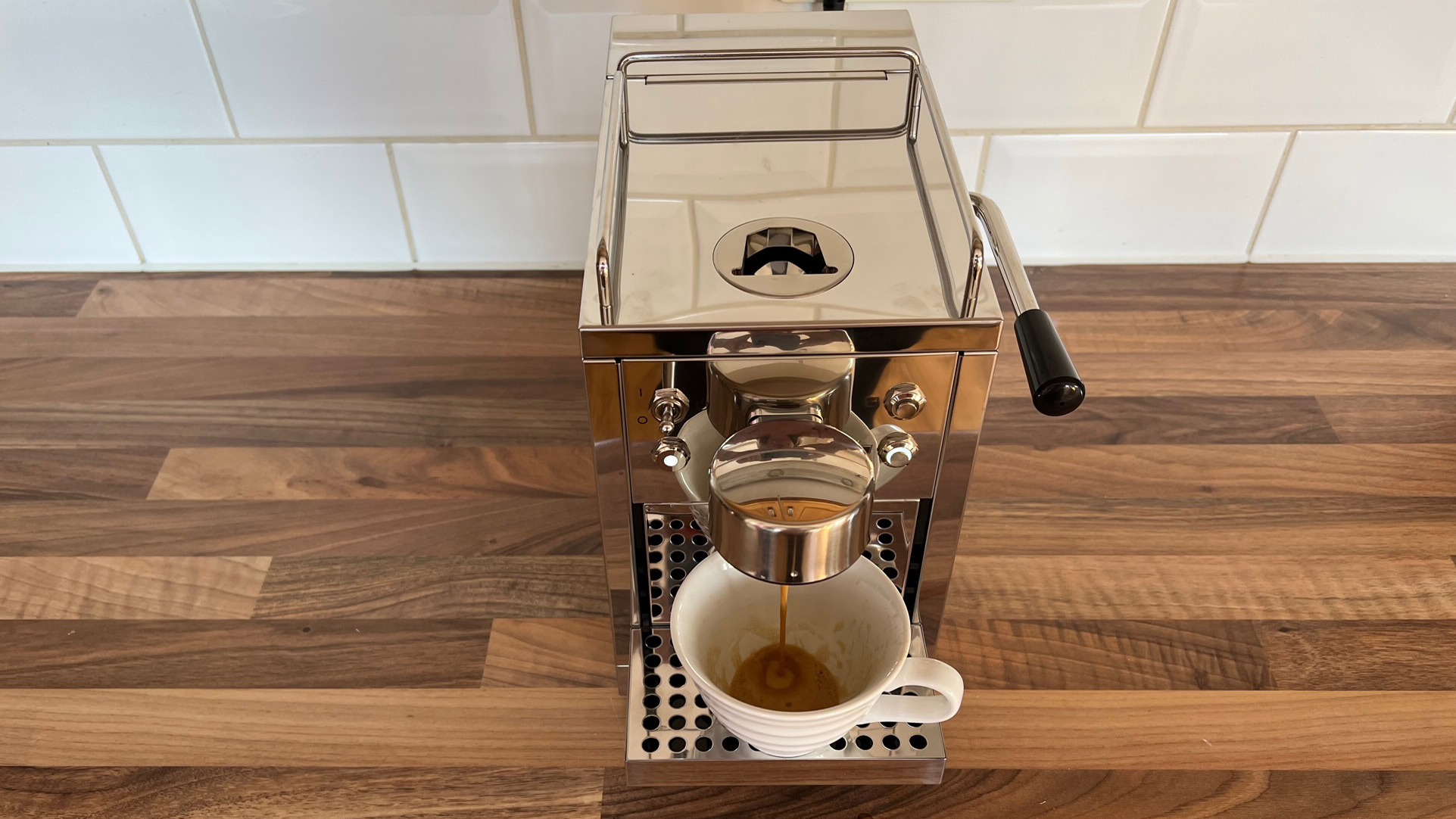
We take testing the best coffee makers seriously and put all the machines through their paces to see if they really can do everything they promise to. We test each coffee maker for the crema it produces on an espresso, how easy it is to use and set up, and also for consistency from one cup to another.
When we’re testing, we take into account the overall design of each coffee maker - how it looks, how much space it’ll take up on your kitchen counter, whether the water tank is removable for easy refills, and how the machine looks as a whole.
For coffee makers with milk frothers, we test the milk texture to see if it’s silky and smooth and of course, we wouldn’t be doing our jobs if we didn’t drink plenty of coffee along the way to see how each cup measures up for the overall taste.
We test models to see how much control you have over each cup of coffee, and whether it’s a case of simply pressing a button or whether more of a hands-on approach is needed. All the best coffee machines will require regular cleaning so we’re always sure to note what maintenance is involved and how easy these machines are to keep in top condition.
- You've reached the end of the page. Jump back up to the top ^
Sign up for breaking news, reviews, opinion, top tech deals, and more.

Cat is TechRadar's Homes Editor specializing in kitchen appliances and smart home technology. She's been a tech journalist for 15 years, having worked on print magazines including PC Plus and PC Format, and is a Speciality Coffee Association (SCA) certified barista. Whether you want to invest in some smart lights or pick up a new espresso machine, she's the right person to help.
